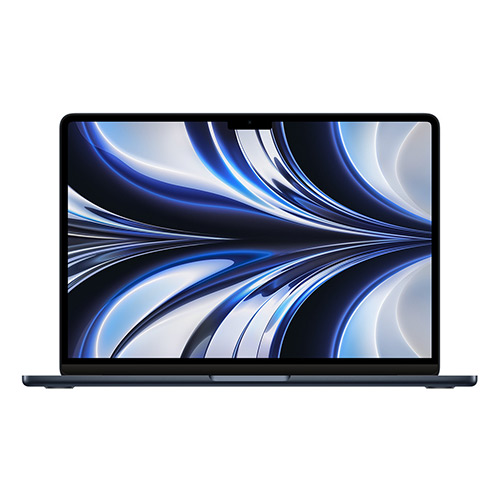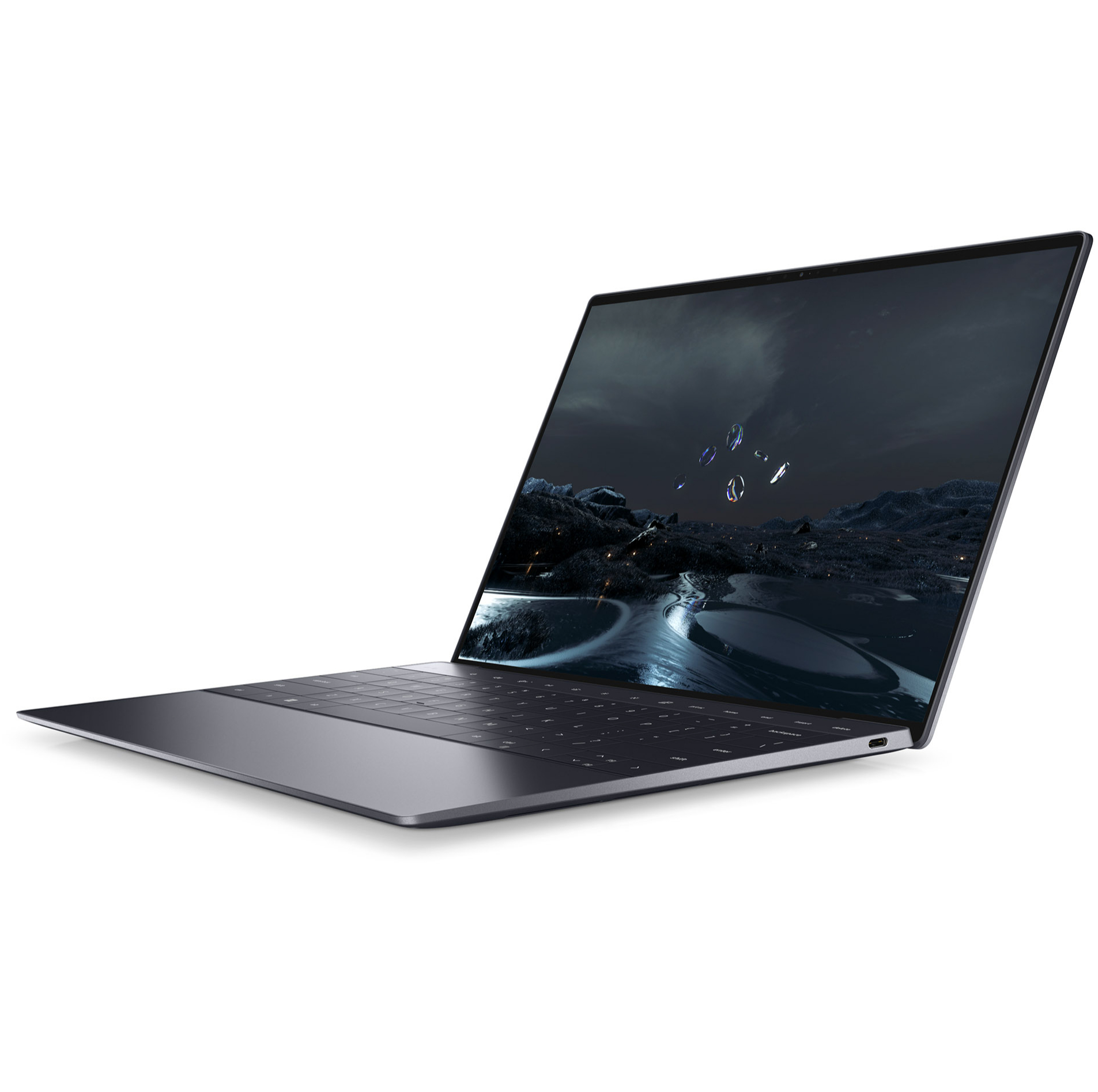Latest Laptop Reviews
- Details
Apple MacBook Pro 14 2024 Review: A Capable Laptop That Plays It Safe
The MacBook Pro 14 with M4 includes a brighter display and more horsepower, plus it still has the best battery life in the biz.

- Details
Apple MacBook Pro 14-inch M4 (2024) review: one of the best Pro laptops around just got better
of the MacBook Pro design, especially since Apple refined it by removing the Touch Bar, a neat innovation that never reached its full potential. My M4 Pro review unit, supplied by Apple, is a sleek-looking Space Black that's both elegant and wonderfully functional. The Magic Keyboard is still a typing gem, and I love the massive trackpad and all that space for resting my hands. And the stereo speakers that straddle the keyboard deliver powerful, crisp, and clear audio that could provide the soundtrack for your party in a pinch.When I think about the reasons why you'd buy an M4 14-inch Mac Pro over the cheaper M3-running MacBook Air, the list is smaller than when I've compared the Pro and Air options previously, but there are a handful of standout features that make this MacBook Pro 14 M4 (2024) a near-perfect choice. (Image credit: Future / Lance Ulanoff) For starters, you have the ports. Where the Air tops out at a Thunderbolt 3 port, you get a trio of speedy Thunderbolt 4 ports with the MacBook Pro (you'll need to upgrade to the M4 Pro model for Thunderbolt 5). You also gain the SD card slot, an instant bonus for photo and video professionals. The larger body and ever-efficient 3-nanometer system-on-a-chip (SoC) means a promised 24 hours of battery life – for a Pro-level system, that's unheard of. Naturally, real-world usage times varied widely in my testing based on activity (AAA gaming can quickly eat up battery).The biggest difference between Air and Pro might be the display. This Liquid Retina XDR is an inch larger than the MacBook Air's, and it offers a nano-texture option (an extra $150 / £150 / AU$230), something I highly recommend for cutting down on reflections in almost any situation.With the MacBook Pro 14-inch M4, Apple has created a pro-grade portable that impresses in every respect. It joins Apple's pantheon of outstanding laptops, and is set to take a well-deserved place at or near the top of our best laptops rankings. Apple MacBook Pro 14-inch M4 (2024) review: Price and availability Starts at $1,599 / £2,149 / AU$3,199Nano-texture (which you want) will run you another $150 / £150 / AU$230 Apple unveiled the M4 MacBook Pro 14-inch on October 30, along with the new MacBook Pro 16-inch, Mac mini, and iMac. All these new Macs are running variations of Apple's M4 silicon.Pricing for the M4 MacBook Pro 14-inch starts at $1,599 / £1,599 / AU$2,499 for the base configuration, which comes with the standard M4 chip and 16GB of unified memory. If you want the M4 Pro chip, pricing starts at $1,999 / £1,999 / AU$3,299, while the M4 Max model starts at $2,399 / £2,399 / AU$3,999. (Image credit: Future / Lance Ulanoff) My Space Black review unit is the base model (10-core M4, 16GB of RAM, and 512GB of storage) but with one key enhancement: the aforementioned nano-texture Liquid Retina XDR display coating, which costs an extra $150 / £150 / AU$230. Value score: 4/5 Apple MacBook Pro 14-inch M4 (2024) review: Specs The MacBook Pro 14-inch M4 (2024) comes in three main configurations: our test unit, the base M4; a pair featuring the M4 Pro chip with options of 16- or 20-core GPU and up to 1TB storage; and at the high end, the M4 Max model, which offers one configuration with a 14-core CPU, 32-core GPU, 32GB of unified memory, and 1TB of SSD. Apple MacBook Pro 14-inch M4 (2024) review: Design Virtually the same design as the previous modelAll the key ports you needFantastic screen Over the last few years I've become an unabashed fan of Apple's increasingly iconic laptop design. Where competitors often try different and sometimes odd design flourishes, Apple carefully peeled away all but what matters, leaving a MacBook Pro that looks and feels as if it was carved from a couple of pieces of 100% recycled black aluminum. Nothing feels like, or works like, it was left to chance. That impression starts when you put your finger under the lip of the display and flip open the clamshell to reveal the screen and keyboard. That hinge is as sure as it gets, offering the perfect blend of tension and smooth movement.At 3.4lbs / 1.55kg. the MacBook Pro 14 M4 is not the lightest laptop or even the lightest MacBook. The excellent MacBook Air holds that distinction, and if you prize portability over power you might be reading the wrong review. On the other hand, the MacBook Pro 14 is by no means heavy (the 16-inch MacBook Pro, by contrast, weighs nearly 5lbs / 2.27kg).Folded close, the MacBook Pro 14 is just 0.61 inches tall, 12.3 inches wide, and 8.71 inches deep. It slips into my backpack and, even though I'm used to carrying the M3 MacBook Air, I mostly forget it's there. Image 1 of 8(Image credit: Future / Lance Ulanoff)Image 2 of 8(Image credit: Future / Lance Ulanoff)Image 3 of 8(Image credit: Future / Lance Ulanoff)Image 4 of 8(Image credit: Future / Lance Ulanoff)Image 5 of 8(Image credit: Future / Lance Ulanoff)Image 6 of 8(Image credit: Future / Lance Ulanoff)Image 7 of 8(Image credit: Future / Lance Ulanoff)Image 8 of 8(Image credit: Future / Lance Ulanoff) Apple hasn't adjusted the ports since the M2 MacBook Pro, which is fine with me. We still have the HDMI-out port if you want to extend your display to a giant, high-resolution screen. Next to that is one of the three Thunderbolt 4 ports and an SD card slot, which I used to transfer some raw images from my DSLR. On the opposite side is the MagSafe charge port, two Thunderbolt 4 (40Gb/s) ports, and the 3.5mm headphone, although I generally connect my AirPods Pros 2 for audio. If you need Thunderbolt 5's 120Gb/s throughput speeds you'll want to upgrade to an M4 Pro chip.The full-sized backlit Magic Keyboard is a pleasure to use (I'm composing this review on it), with ample travel and a satisfying typing feel. It includes the arrow keys and a full line of function keys. On the right side of that is the Touch ID power and sleep button. During setup, it took me a few moments to register my index finger which I now use to unlock the laptop and log into some online services. Below the keyboard is the massive, nearly 6-inch diagonal, and very responsive Forcetouch trackpad.One of the benefits of a larger laptop is that Apple can fit a pair of speaker grilles on either side of the keyboard. They provide fantastic sound, especially when playing spatial audio (try Territory on Netflix).The system features a pair of four-inch vents, one on each side. You usually won't hear the fan until you play AAA games or run benchmarks. Design score: 5/5 Apple MacBook Pro 14-inch M4 (2024) review: Display It's gorgeousBetter brightness for SDRThe coating you want While it might look like Apple left the Liquid Retina XDR display from the M2 MacBook Pro untouched, there are a couple of noteworthy differences. But let's start with what's the same.It's still the same mini-LED technology offering a 1,000,000:1 contrast ratio and one billion colors with a P3 wide color and ProMotion with up to 120Hz refresh rate. The resolution is still nearly 4K at 3096 x 1964 pixels. However, Apple has boosted the brightness a bit, with SDR content now getting up to 1,000 nits. HDR still gets a peak brightness of 1600. These numbers primarily matter outdoors, where you might be battling back the sunshine, and I found that the display was quite effective at remaining viewable and usable in direct sunlight. I attribute this, however, only in part to the heightened SDR nit capabilities. Image 1 of 3(Image credit: Future / Lance Ulanoff)Image 2 of 3(Image credit: Future / Lance Ulanoff)Image 3 of 3(Image credit: Future / Lance Ulanoff) My screen came with the optional nano-texture coating. This adds a fine texture across the entire screen that's meant to diffuse direct sunlight (the MacBook Pro comes with a special cloth for cleaning the screen). It costs an extra $150 / £150 / AU$230, but it's transformative technology. Not only does it effectively kill outdoor reflections, it also transforms how streaming and gaming content looks on the display. No more desk and overhead lamp bulbs peaking into the frame. No more window light killing your gaming groove. I honestly wonder why all laptops, Macs and otherwise, do not come with this texture. It's a game-changer. Image 1 of 2The nano texture helps make the screen viewable in direct sunlight. (Image credit: Future / Lance Ulanoff)Image 2 of 2(Image credit: Future / Lance Ulanoff) The 14.2-inch screen is big enough for lots of side-by-side app work. It's the perfect canvas for photo editing in Adobe Lightroom and video work in FinalCut Pro. but is also well suited to lighter productivity (like my efforts to write this review), email, and web browsing. It's not a touch screen because Apple refuses to bring that technology to Macs, even as the touch-friendly iPad Pro becomes more and more Mac-like. The trackpad is large enough that I don't miss touching a screen (as I did for years for Microsoft Surface Pro) but I can't help but wonder how a MacBook Pro with a touch, and Apple Pencil-friendly, display would alter the way we use this laptop. Almost twins. The MacBook Pro 14 M4 is on the left, the MaxBook Pro 14 (2023) in on the right. (Image credit: Future / Lance Ulanoff) The other display change relates less to what you'll see on the Liquid Retina XDR panel and more to how others will see you through it. Apple has upgraded the FaceTime camera, which sits at the top of the display in a cutout notch, with a 12MP ultrawide that supports its Center Stage technology. Center Stage takes the full 12MP ultrawide frame and narrows the viewport so that you are always centered in the frame. It doesn't matter if you lean left or right or get up and walk around the room, Center Stage will follow. It's a useful feature in FaceTime – I tested it on a call with my wife who wondered why I kept moving around – and also on Zoom, where it worked well but was not useful in a broadcast video situation, so I turned it off. Center Stage did not work for me in Google Meet, where I conduct most of my video meetings. The new Center Stage Camera (Image credit: Future / Lance Ulanoff) Display score: 4.5/5 Apple MacBook Pro 14-inch M4 (2024) review: Performance M4 has the Pro power most needmacOS Sequoia is flexible and easy to use AAA gaming on a Mac is real BenchmarksHere’s how the MacBook Pro 14-inch (2024) performed in our suite of TechRadar and Future Labs benchmark tests:Cinebench R23 CPU: Single-Core: 2,180 Multi-Core: 13773Geekbench 6.3 Single-Core: 3,845; Multi-Core: 15,136Geekbench AI: Single: 4,764 Half Precision: 7,837 ; Quantized Score: 6.357PugentBench Photoshop: 10,542PugentBench Premier Pro: 4,618Blender: Monster: 115.8; Junkshop: 73.17; Classroom: 188.1Battery Life (web site surfing rundown): 18 hours and 31 minutes The last time we reviewed a 14-inch MacBook Pro, it was running an M2 Pro. The base M4 inside my test unit has similar but not equal specs. It's still a 10-core CPU, but where the M2 Pro had a 16-core GPU, the M4 starts with 10 cores. However the M2 chips were all built on a 5-nanometer process, and the M4 line is on the more efficient three nanometers, which could lead to a better combination of power and efficiency.The Neural Engine, which handles a lot of onboard machine learning and AI tasks, still has the same 16 cores. Image 1 of 2The FPS ranged from low 40s to mid 60s on Shadow of the Tomb Raider (Image credit: Future)Image 2 of 2(Image credit: Future) Apple is now backing all of its new Macs with at least 16GB of RAM. This pays dividends in AI (Apple Intelligence is on board) and graphically intense operations like ray tracing, which helps make games like Lies of P look incredible on the MacBook Pro 14.In benchmark testing, I found the numbers in line with the M4 performance I saw from the iPad Pro 13 inch. Geekbench 6.3 numbers measurably exceed those of the M3 in my MacBook Air.When I played Shadow of the Tomb Radar, Steam's internal frames per second counter showed I got anywhere between 42fps and 62fps. To my eyes, there was no tearing or dropped frames. Image 1 of 3(Image credit: Future / Lance Ulanoff)Image 2 of 3I played games and dited RAW photos on the MacBook Pro. (Image credit: Future / Lance Ulanoff)Image 3 of 3(Image credit: Future / Lance Ulanoff) Numbers only tell you so much, and what matters most is real-world experience. I did do a fair amount of gaming on this MacBook Pro. As I noted above, the nano-texture screen makes games look amazing. In my Lies of P sessions (I connected an X Box controller via Bluetooth), I took note of the rich atmospherics, from rain to fire, and the level of detail that never descended into unwatchable blurs. Gaming on the MacBook Pro benefits from macOS Sequoia's Game Mode, which prioritizes gaming tasks for truly smooth and responsive performance. The one time the M4 couldn't handle the task: four 4K 120fps streams playing back through FinalCut Pro. It had no trouble with four 4K 30fps streams. (Image credit: Future) In FinalCut Pro, I edited four 4K 30fps streams at once, which played back smoothly in full-screen preview. However, when I tried the same thing with four 4K 120fps video clips shot on the iPhone 16 Pro Max, full-screen playback started dropping frames – an on-screen message confirmed this. It was one of the rare times I found the limits of Apple silicon.Editing raw photos in Adobe Lightroom is a breeze. It's also worth noting that I rarely shut down other apps while I performed these operations, and as I noted earlier, the only times I heard the fans were during console-grade gameplay and Cinebench 23 benchmarking.Keep in mind that my tests were all with the base M4 Apple silicon; imagine what you can expect from the M4 Pro and M4 Max.Connectivity is mostly what you would expect, with support for Bluetooth 5.3 and Wi-Fi 6E. I am a bit disappointed, though, that Apple didn't future-proof the laptop a bit with Wi-Fi 7 support. Performance score: 5/5 Apple MacBook Pro 14-inch M4 (2024) review: Software macOS 15.1Some Apple Intelligence Image 1 of 2This is quite the long-form article boil-down. (Image credit: Future)Image 2 of 2(Image credit: Future) macOS Sequoia (macOS 15.1) has a lot to offer. There's the new Passwords app, which gives you a full-blown application for managing your passwords, and there's the updated Notes, which can now transcribe recordings. It's not as good as the transcription in Voice Recorder on Android (it doesn't identify multiple speakers) but it's still useful.There are now Highlights in Safari that can take a 3,000-word-plus New Yorker article and boil it down to a one-paragraph summary. I worry that loses the nuance of such a piece, but if you're in a hurry... iPhone mirroring is impressive. (Image credit: Future) There's also iPhone Mirroring, which lets you access and control your iPhone from the MacBook Pro. It's supposed to be useful when you don't have access to your iPhone (maybe it's just in another room), and I found it easy to connect an iPhone 16 Pro and then have a virtual version of the iPhone on my MacBook Pro 14 desktop. What's even wilder is how I can control the phone from the desktop system. I can message, browse the web, and even drag and drop between the desktop and the iPhone interface. I did notice that while I can open the iPhone camera, I cannot use the MacBook Pro 14 to take a picture with the phone.Apple Intelligence is here within macOS 15.1, in the form of a redesigned Siri that supports Type to Siri and which can be dragged around the desktop. I found that I could ask Siri how to do things with the MacBook Pro, like find my Wi-Fi settings and opening an app like Notes.Apple Intelligence puts email summaries at the top of email, and the writing tools are embedded throughout the system. In Notes, I asked the Writing Tools to rewrite my lengthy meeting notes. It did a really good job of boiling it all down to a concise bullet list, which I could also easily undo. This could be very useful.This is not all of Apple Intelligence. There's no Image Playground for instance, but that will show up with macOS 15.2, possibly by early December. A taste of AI During my testing, I did install the macOS 15.2 Developer Beta so that I could get a sample of this MacBook Pro 14 M4's Apple Intelligence capabilities. Because this update is not intended for the public, my thoughts on this dev beta were not considered as part of my final software, performance and overall review score.First, I was excited to see Clean Up now inside of the Photos app. It works just as it does in iOS 18 on the iPhone, and was useful for removing some unwanted items from my photos. Image 1 of 4(Image credit: Lance Ulanoff)Image 2 of 4(Image credit: Lance Ulanoff)Image 3 of 4(Image credit: Lance Ulanoff)Image 4 of 4(Image credit: Lance Ulanoff) ChatGPT's Siri integration, which I had to enable, is quite smooth, and looks and works as if it's a part of Siri. I used it in the Type to Siri mode, entering my prompt about how to create a goods presentation. The answer I got from ChatGPT through Siri was solid. Image 1 of 3(Image credit: Future)Image 2 of 3(Image credit: Future)Image 3 of 3(Image credit: Future) Image Playground, the generative AI image tool which lives in an adorable kitty app icon in the Dock, is also part of this beta, but it's still gated by an invite and, as I write this, I still await mine. Apple MacBook Pro 14-inch M4 (2024) review: Battery life Rated for 24-hour video streamingLasted more than 18 hours in our testsBattery life is dependent on activity The MacBook Pro 14 M4 is, according to Apple's promises, perhaps the first truly all-day laptop, rated to last up to 24 hours on a charge. Naturally, that's if you do nothing but stream seasons 1 through 3 of Stranger Things. Once you start adding in activities like web browsing, and emailing, Slack, gaming, and photo and video editing, those numbers change.In our Future Labs tests, we found that we could get 18.5 hours of web browsing, which is two hours more than Apple is promising. Once I started gaming, though, battery life took a fast tumble; the system is clearly hard at work rendering the exquisite detail in Lies of P. I heard the fans going full-blast, and noticed the bottom of the laptop got quite warm. My advice is if you want to use the MacBook Pro 14 M4 as a gaming rig, keep the included 70W charger and woven USB-C to MagSafe cable close by.Speaking of that charger; when I drained the system to zero, I was able to use it to recharge the MacBook Pro 14 M4 to 43% in 30 minutes. That's a bit less than the 50% I was expecting. To fully recharge, it took more than an hour.I've had incredible battery experiences with the MacBook Air and its M3 chip. I can already see that, in normal use, the MacBook Pro 14 M4 is a sun-up-to-sun-down kind of system. That's impressive, and a big win for Pro fans. Battery score: 4.5 / 5 Should you buy the Apple MacBook Pro 14-inch M4 (2024)? Buy it if... You want portable power without breaking the bankThe MacBook Pro 14-inch M4 (2024) is a good blend of performance, portability, and reasonable price. You want sunrise-to-sunset battery lifeYou can easily get a day of activity with the power-sipping system You’re Team AppleThere are great benefits to adding a MacBook when you already have an iPhone and an Apple account. Don't buy it if... You want the ultimate performanceThis is a baseline M4, but the new MacBook Pro comes in M4 flavors that run up to the new M4 Max and a 16-inch display. You need a touch screenNo MacBook offers it. Try an iPad or a Surface Pro. You have a 2024 MacBook ProApple hasn't redesigned the MacBook Pro, and the M2 and M4 performance numbers are not that far apart. MacBook Pro 14-inch M4 (2024) review: Also consider If our Apple MacBook Pro 14 M4 (2024) review leaves you considering other options, here are two laptops to consider... Apple MacBook Air (M3, 2022)The follow-up to one of the best laptops ever released, the 2022 MacBook Air is svelte and sleek, with a larger screen and the same outstanding battery life. If you want a MacBook, but don't need the power of the MacBook Pro 14-inch, this is the one to get.Check out our Apple MacBook Air (M2, 2022) review Dell XPS 13 PlusIts sleek and slim design, combined with a gorgeous OLED screen, great sound quality, and lattice-free keyboard embodies the luxury inherent of an Ultrabook. However, it’s also prone to overheating, and the touch bar is annoyingly inaccessible.Read more: Dell XPS 13 Plus review How I tested the Apple MacBook Pro 14 M4 (2024) Apple MacBook Pro 14 M4 (2024) in studio (Image credit: Future / Lance Ulanoff) I spent more than a week with the MacBook Pro 14 M4 (2024)I used it as an everyday productivity, creativity, and entertainment deviceI ran benchmarks Apple provided me with the base MacBook Pro 14 M4 system, and I used it every day to test and help craft this review. I set it up as a work system, and as one for production and play. I used it indoors and outdoors.Read more about how we test First reviewed November 2024
Apple MacBook Pro 14-inch M4 (2024) : Two-minute review
Apple's MacBook Pro 14-inch M4 is the full package, a near-perfect blend of price, performance, and utility. The M4 is the base edition of the newest and most powerful generation of Apple silicon (it's the same chip that's already running in the iPad Pro 13-inch) but it's still bursting with power, and more than capable of doing most of the heavy-lifting you want from a pro-level portable machine, as ready to edit raw photos and 4K video as it is to stand in as an able gaming console.
I've long been a fan of the MacBook Pro design, especially since Apple refined it by removing the Touch Bar, a neat innovation that never reached its full potential. My M4 Pro review unit, supplied by Apple, is a sleek-looking Space Black that's both elegant and wonderfully functional. The Magic Keyboard is still a typing gem, and I love the massive trackpad and all that space for resting my hands. And the stereo speakers that straddle the keyboard deliver powerful, crisp, and clear audio that could provide the soundtrack for your party in a pinch.
When I think about the reasons why you'd buy an M4 14-inch Mac Pro over the cheaper M3-running MacBook Air, the list is smaller than when I've compared the Pro and Air options previously, but there are a handful of standout features that make this MacBook Pro 14 M4 (2024) a near-perfect choice.
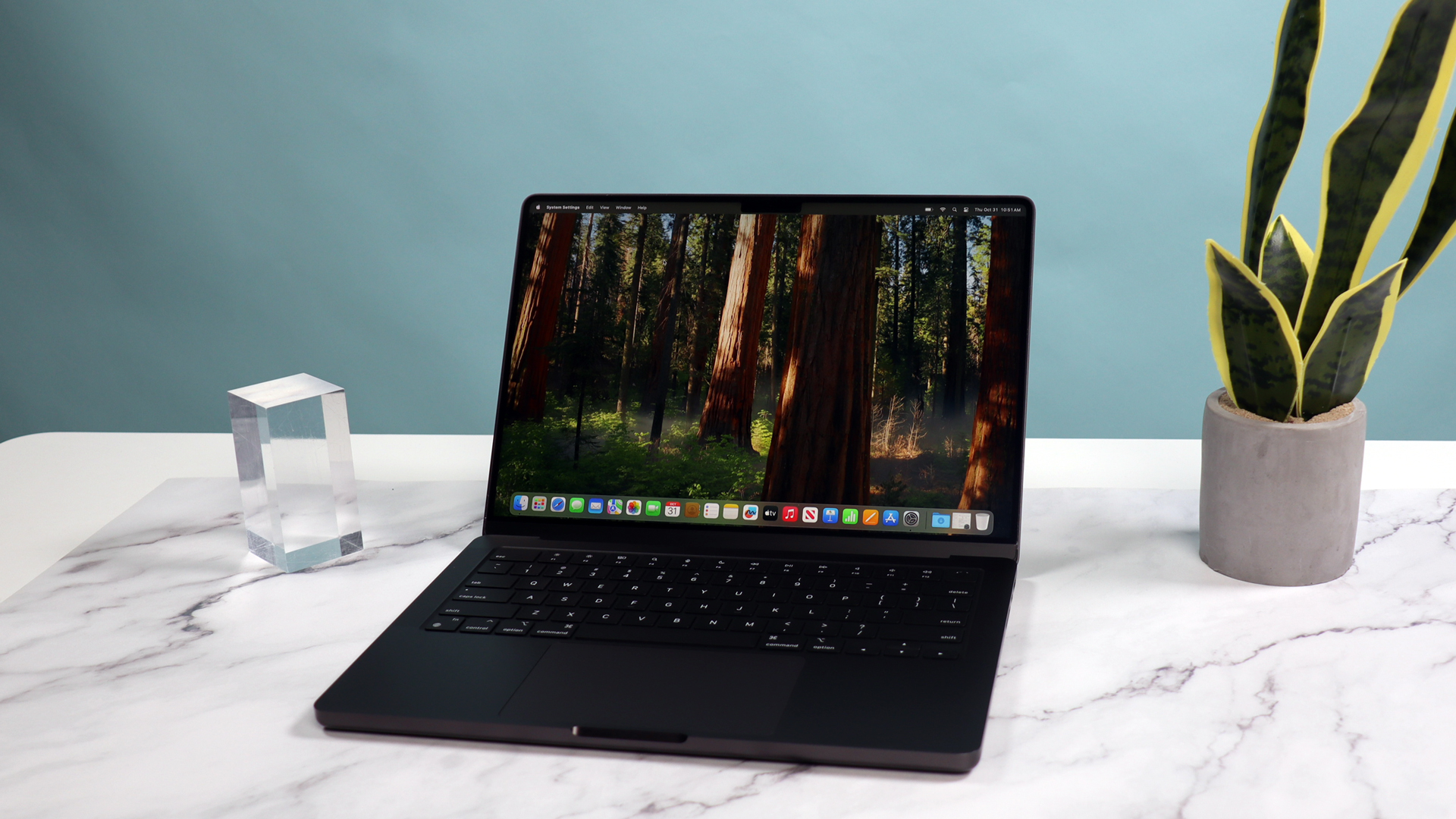
For starters, you have the ports. Where the Air tops out at a Thunderbolt 3 port, you get a trio of speedy Thunderbolt 4 ports with the MacBook Pro (you'll need to upgrade to the M4 Pro model for Thunderbolt 5). You also gain the SD card slot, an instant bonus for photo and video professionals. The larger body and ever-efficient 3-nanometer system-on-a-chip (SoC) means a promised 24 hours of battery life – for a Pro-level system, that's unheard of. Naturally, real-world usage times varied widely in my testing based on activity (AAA gaming can quickly eat up battery).
The biggest difference between Air and Pro might be the display. This Liquid Retina XDR is an inch larger than the MacBook Air's, and it offers a nano-texture option (an extra $150 / £150 / AU$230), something I highly recommend for cutting down on reflections in almost any situation.
With the MacBook Pro 14-inch M4, Apple has created a pro-grade portable that impresses in every respect. It joins Apple's pantheon of outstanding laptops, and is set to take a well-deserved place at or near the top of our best laptops rankings.
Apple MacBook Pro 14-inch M4 (2024) review: Price and availability
- Starts at $1,599 / £2,149 / AU$3,199
- Nano-texture (which you want) will run you another $150 / £150 / AU$230
Apple unveiled the M4 MacBook Pro 14-inch on October 30, along with the new MacBook Pro 16-inch, Mac mini, and iMac. All these new Macs are running variations of Apple's M4 silicon.
Pricing for the M4 MacBook Pro 14-inch starts at $1,599 / £1,599 / AU$2,499 for the base configuration, which comes with the standard M4 chip and 16GB of unified memory. If you want the M4 Pro chip, pricing starts at $1,999 / £1,999 / AU$3,299, while the M4 Max model starts at $2,399 / £2,399 / AU$3,999.
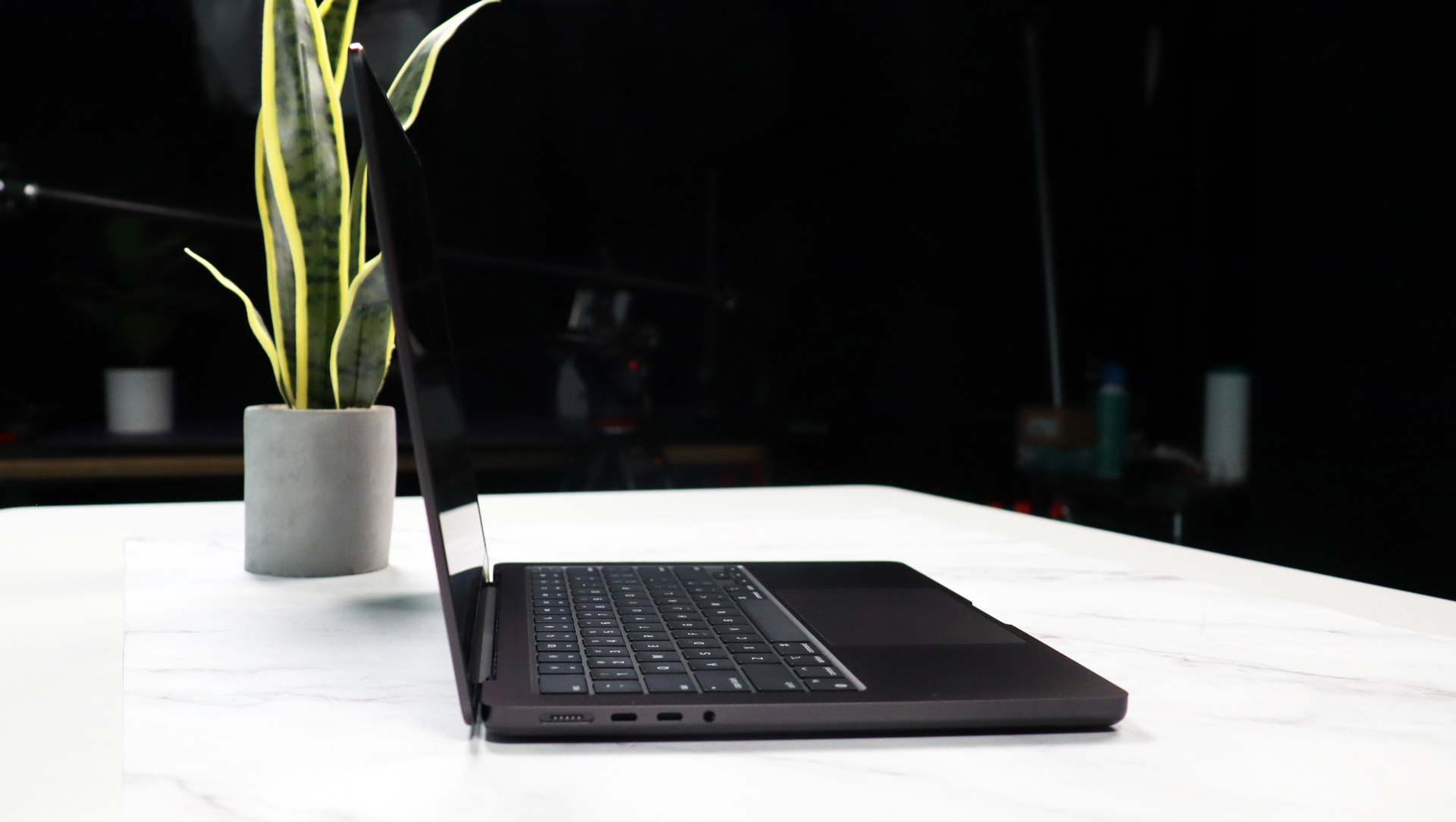
My Space Black review unit is the base model (10-core M4, 16GB of RAM, and 512GB of storage) but with one key enhancement: the aforementioned nano-texture Liquid Retina XDR display coating, which costs an extra $150 / £150 / AU$230.
- Value score: 4/5
Apple MacBook Pro 14-inch M4 (2024) review: Specs
The MacBook Pro 14-inch M4 (2024) comes in three main configurations: our test unit, the base M4; a pair featuring the M4 Pro chip with options of 16- or 20-core GPU and up to 1TB storage; and at the high end, the M4 Max model, which offers one configuration with a 14-core CPU, 32-core GPU, 32GB of unified memory, and 1TB of SSD.
Apple MacBook Pro 14-inch M4 (2024) review: Design
- Virtually the same design as the previous model
- All the key ports you need
- Fantastic screen
Over the last few years I've become an unabashed fan of Apple's increasingly iconic laptop design. Where competitors often try different and sometimes odd design flourishes, Apple carefully peeled away all but what matters, leaving a MacBook Pro that looks and feels as if it was carved from a couple of pieces of 100% recycled black aluminum. Nothing feels like, or works like, it was left to chance. That impression starts when you put your finger under the lip of the display and flip open the clamshell to reveal the screen and keyboard. That hinge is as sure as it gets, offering the perfect blend of tension and smooth movement.
At 3.4lbs / 1.55kg. the MacBook Pro 14 M4 is not the lightest laptop or even the lightest MacBook. The excellent MacBook Air holds that distinction, and if you prize portability over power you might be reading the wrong review. On the other hand, the MacBook Pro 14 is by no means heavy (the 16-inch MacBook Pro, by contrast, weighs nearly 5lbs / 2.27kg).
Folded close, the MacBook Pro 14 is just 0.61 inches tall, 12.3 inches wide, and 8.71 inches deep. It slips into my backpack and, even though I'm used to carrying the M3 MacBook Air, I mostly forget it's there.
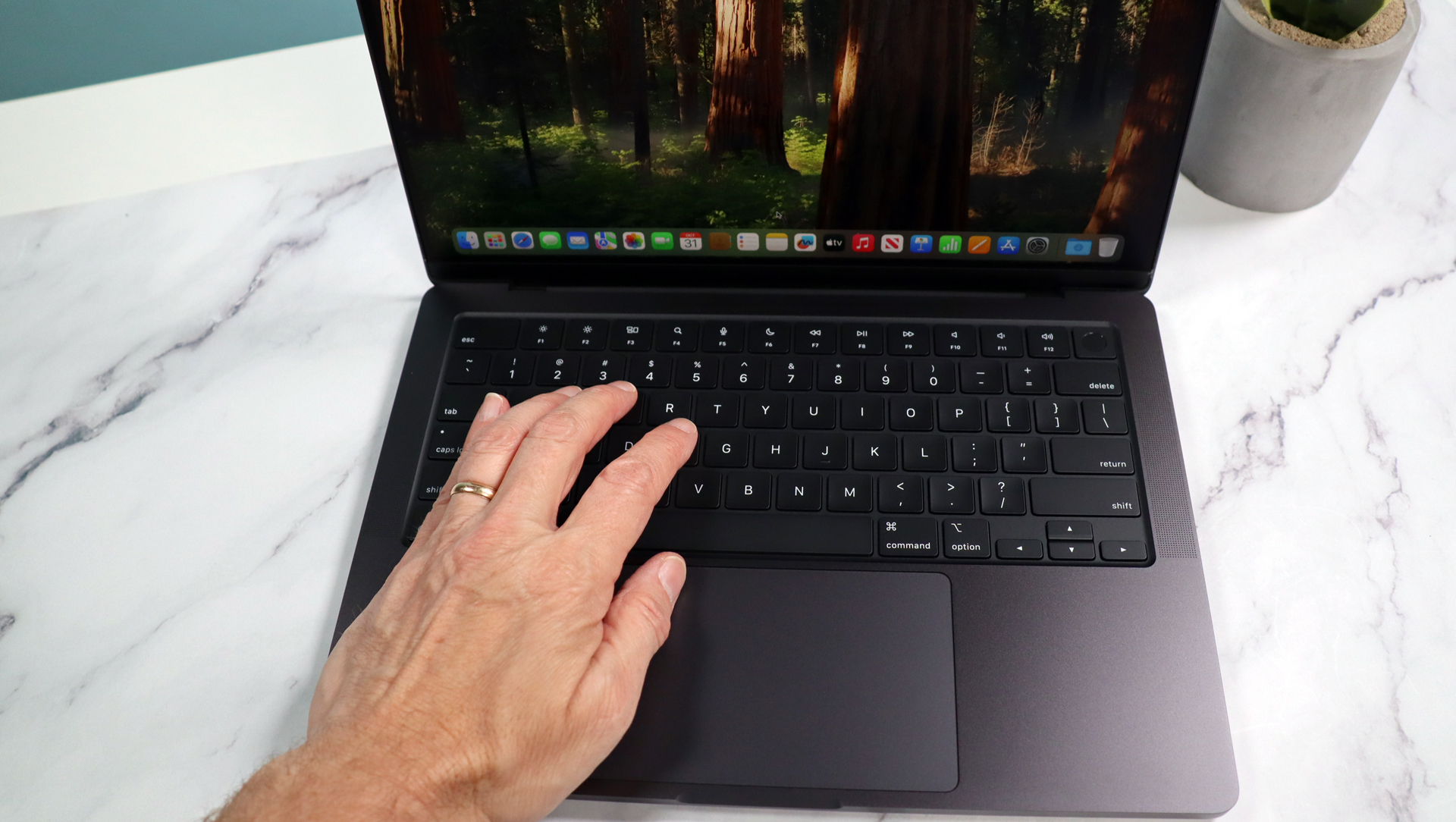
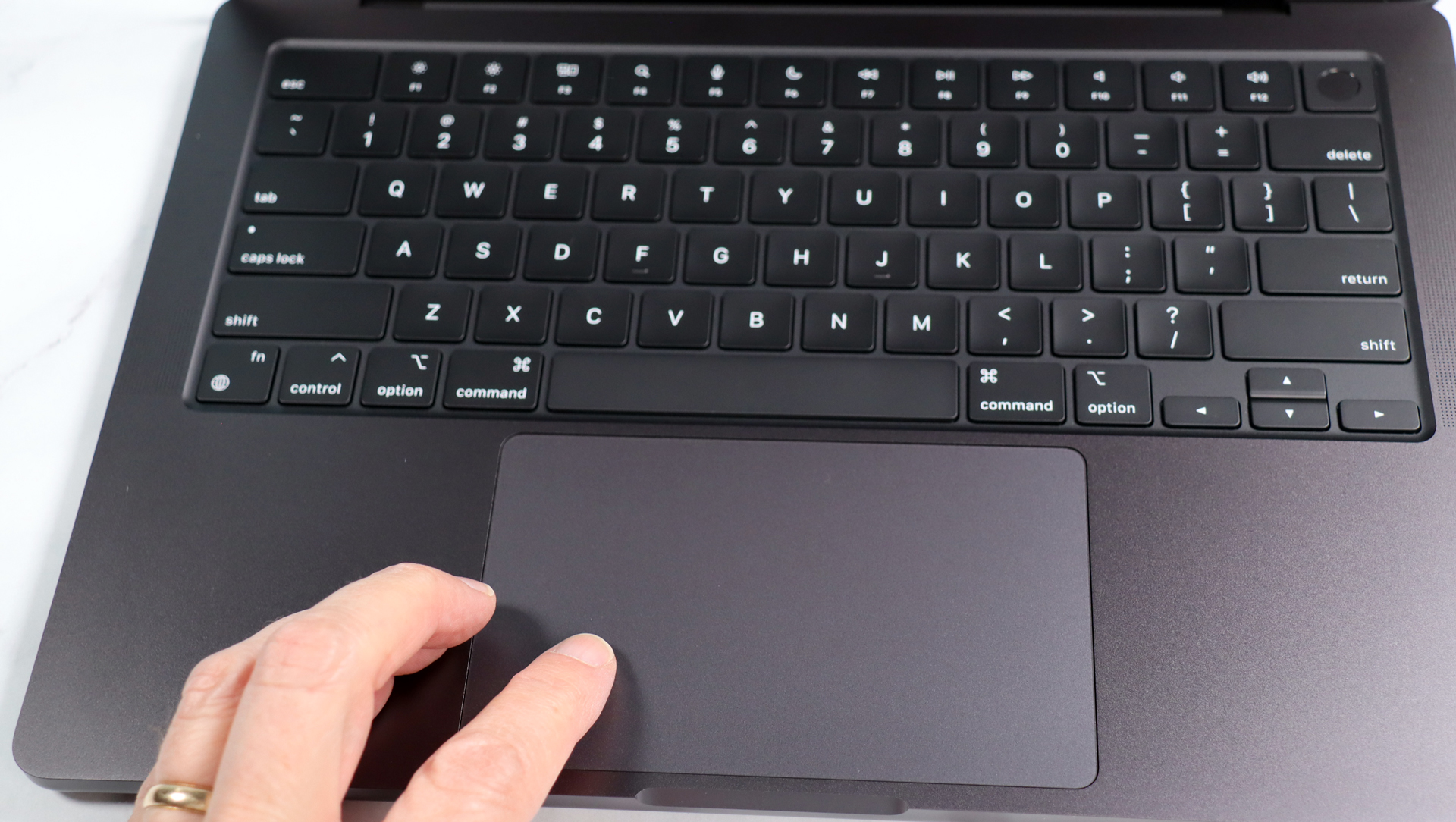
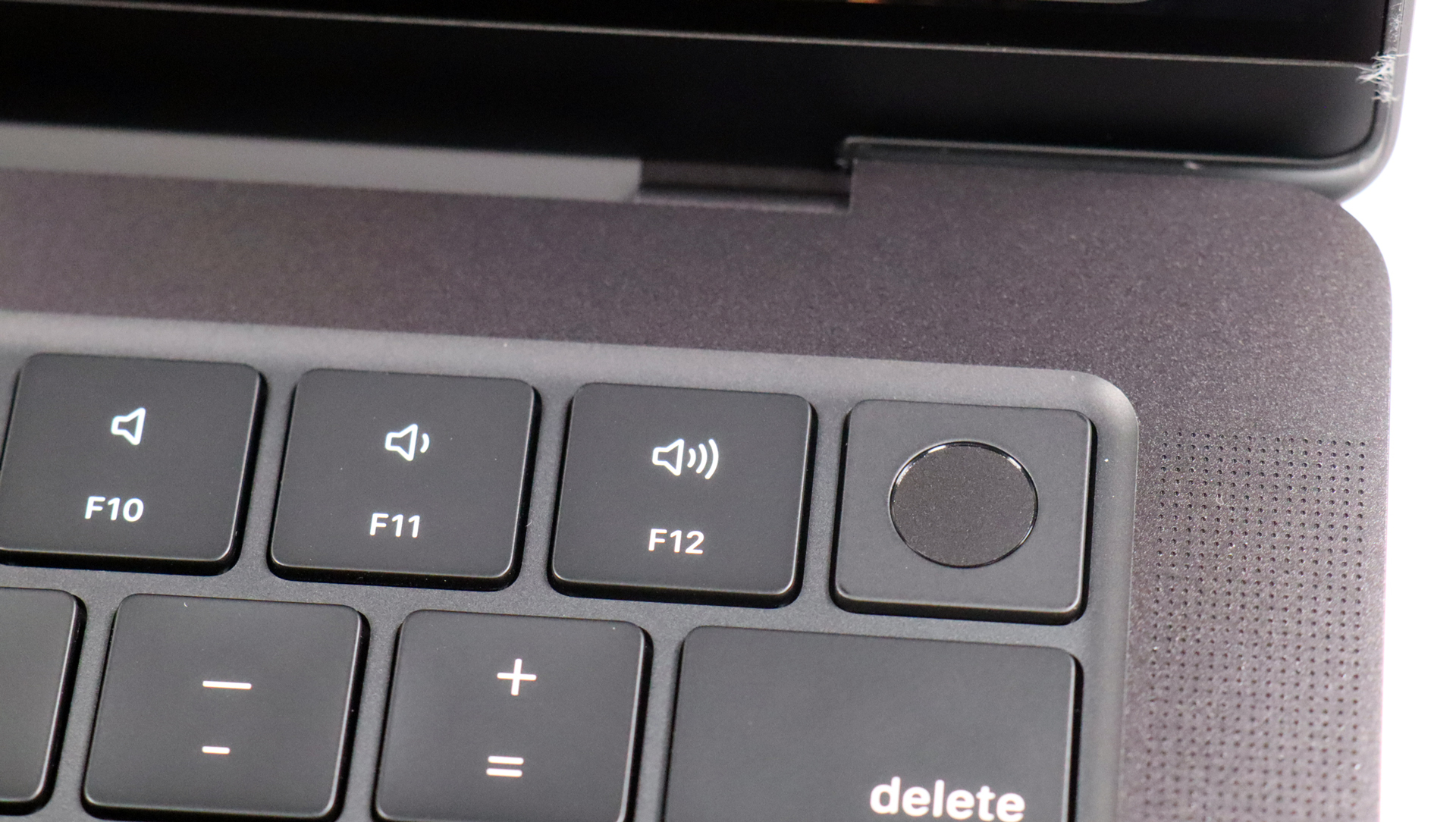
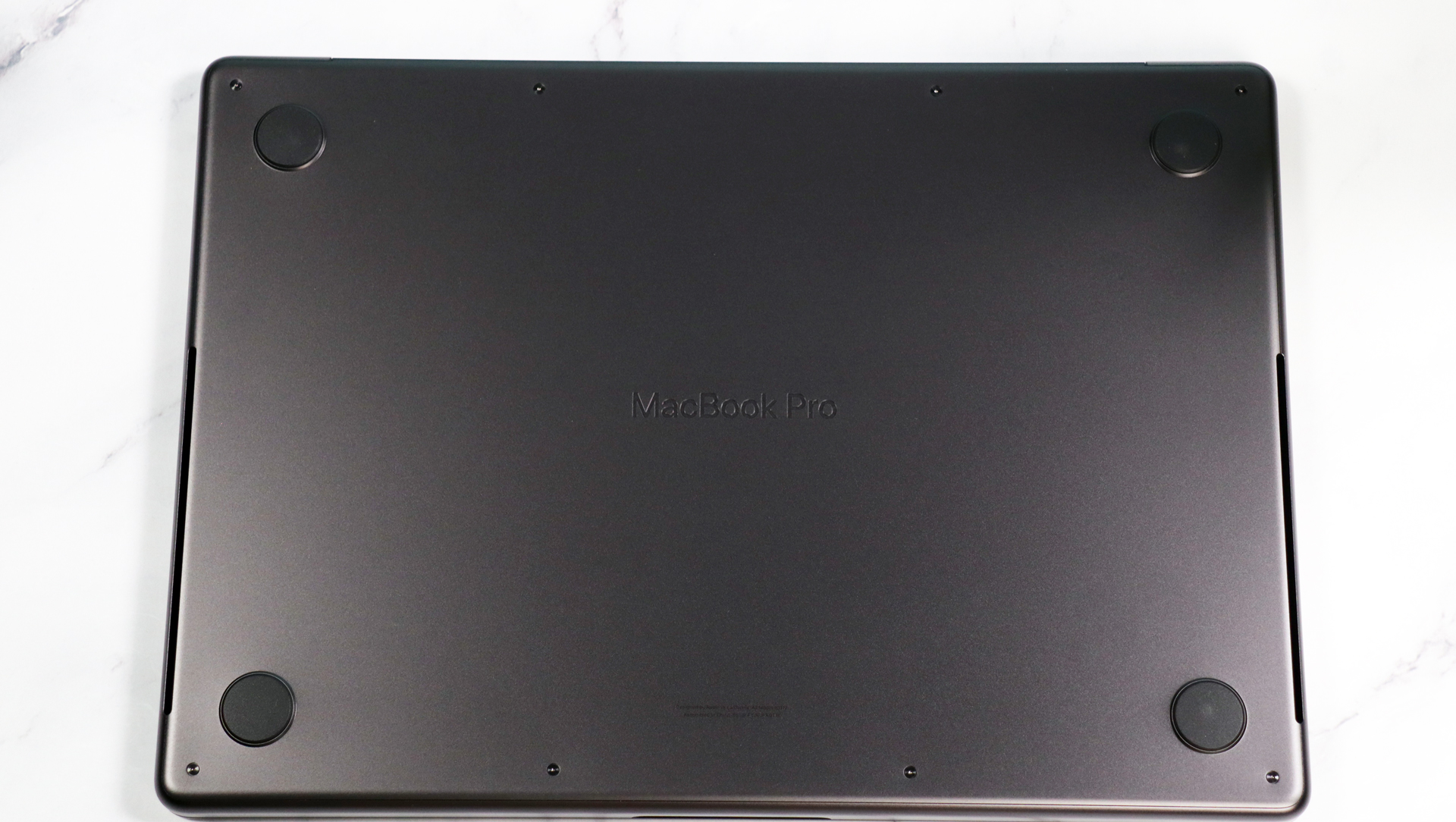
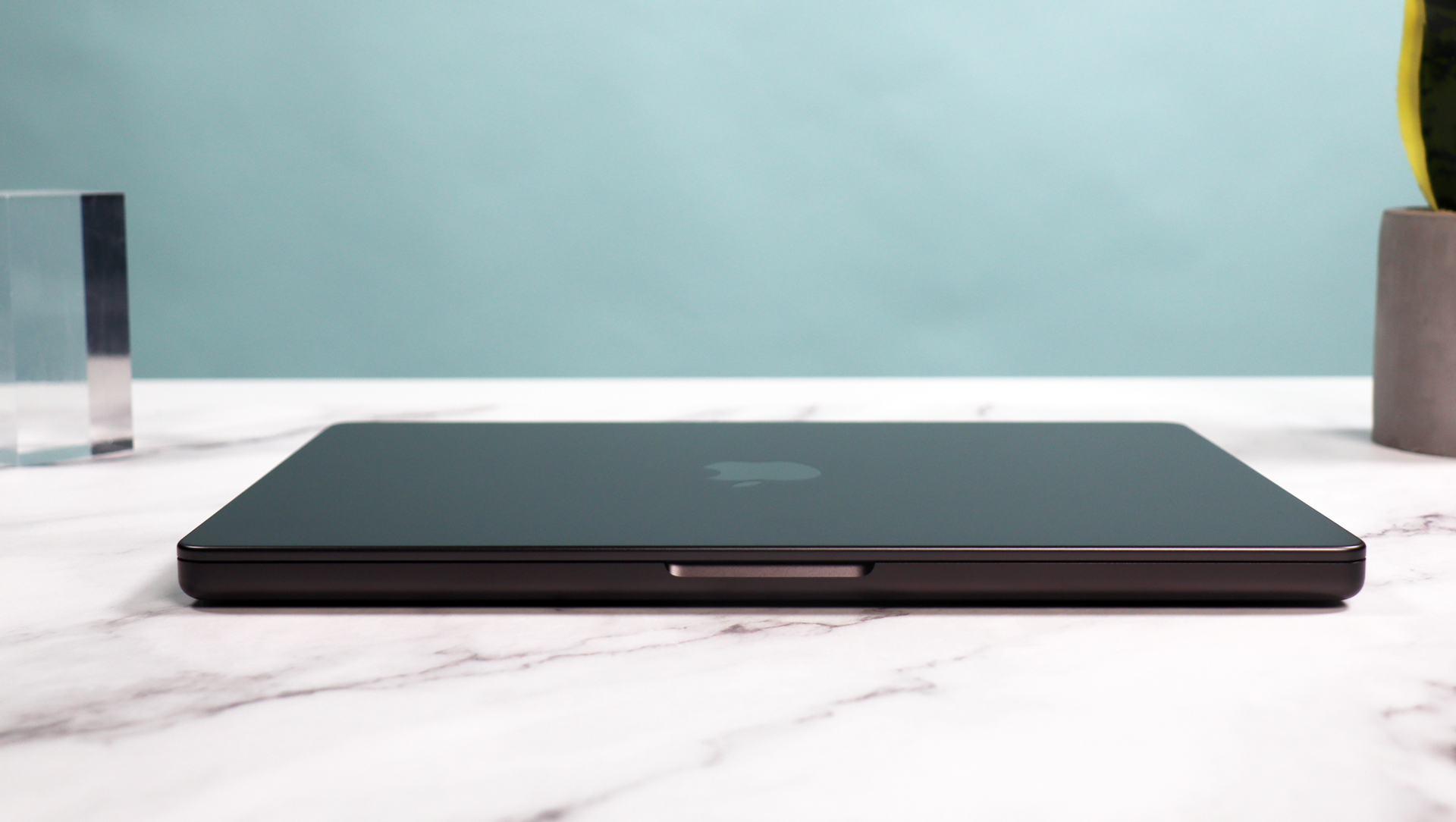
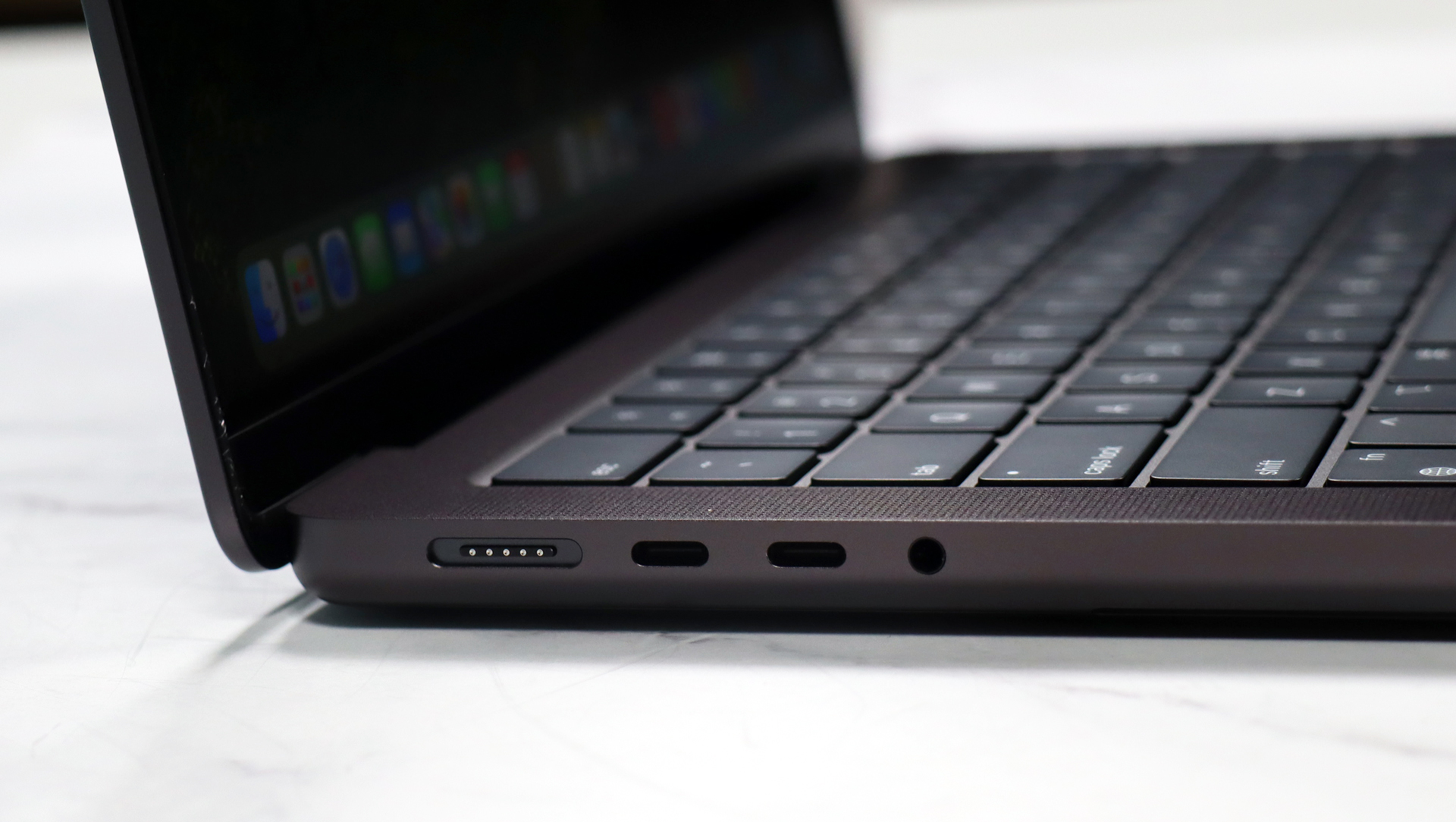

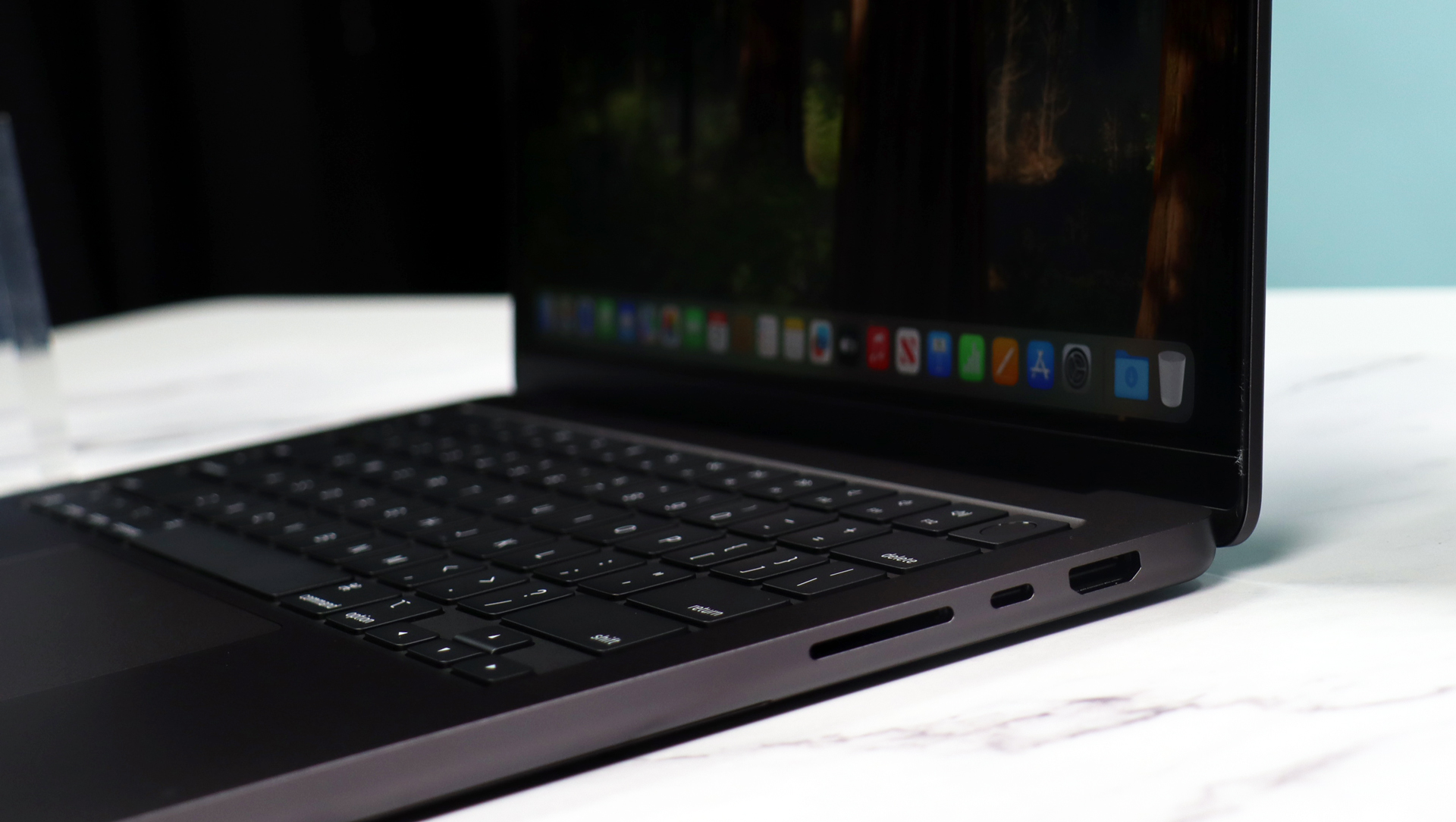
Apple hasn't adjusted the ports since the M2 MacBook Pro, which is fine with me. We still have the HDMI-out port if you want to extend your display to a giant, high-resolution screen. Next to that is one of the three Thunderbolt 4 ports and an SD card slot, which I used to transfer some raw images from my DSLR. On the opposite side is the MagSafe charge port, two Thunderbolt 4 (40Gb/s) ports, and the 3.5mm headphone, although I generally connect my AirPods Pros 2 for audio. If you need Thunderbolt 5's 120Gb/s throughput speeds you'll want to upgrade to an M4 Pro chip.
The full-sized backlit Magic Keyboard is a pleasure to use (I'm composing this review on it), with ample travel and a satisfying typing feel. It includes the arrow keys and a full line of function keys. On the right side of that is the Touch ID power and sleep button. During setup, it took me a few moments to register my index finger which I now use to unlock the laptop and log into some online services. Below the keyboard is the massive, nearly 6-inch diagonal, and very responsive Forcetouch trackpad.
One of the benefits of a larger laptop is that Apple can fit a pair of speaker grilles on either side of the keyboard. They provide fantastic sound, especially when playing spatial audio (try Territory on Netflix).
The system features a pair of four-inch vents, one on each side. You usually won't hear the fan until you play AAA games or run benchmarks.
- Design score: 5/5
Apple MacBook Pro 14-inch M4 (2024) review: Display
- It's gorgeous
- Better brightness for SDR
- The coating you want
While it might look like Apple left the Liquid Retina XDR display from the M2 MacBook Pro untouched, there are a couple of noteworthy differences. But let's start with what's the same.
It's still the same mini-LED technology offering a 1,000,000:1 contrast ratio and one billion colors with a P3 wide color and ProMotion with up to 120Hz refresh rate. The resolution is still nearly 4K at 3096 x 1964 pixels. However, Apple has boosted the brightness a bit, with SDR content now getting up to 1,000 nits. HDR still gets a peak brightness of 1600. These numbers primarily matter outdoors, where you might be battling back the sunshine, and I found that the display was quite effective at remaining viewable and usable in direct sunlight. I attribute this, however, only in part to the heightened SDR nit capabilities.

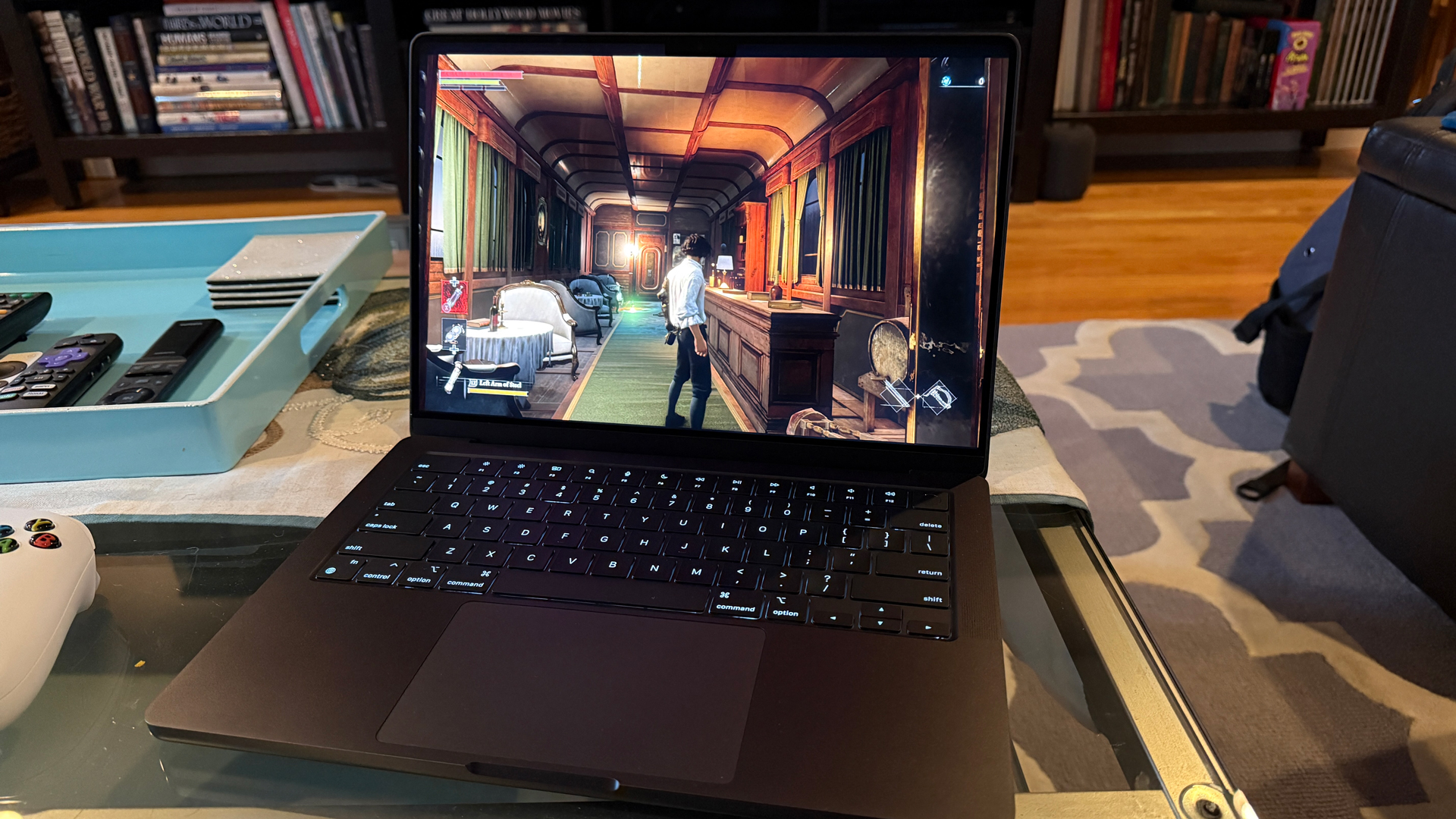
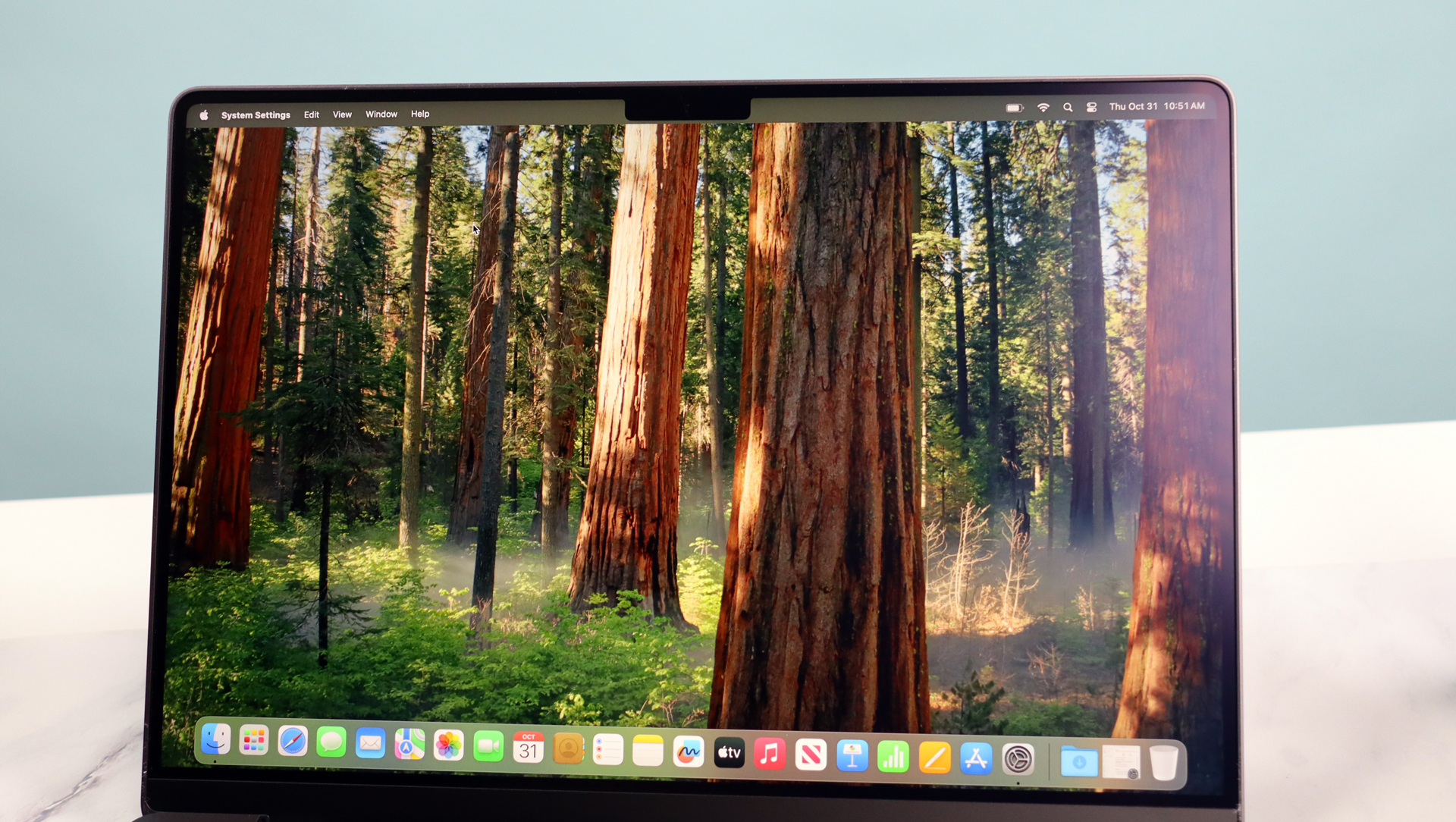
My screen came with the optional nano-texture coating. This adds a fine texture across the entire screen that's meant to diffuse direct sunlight (the MacBook Pro comes with a special cloth for cleaning the screen). It costs an extra $150 / £150 / AU$230, but it's transformative technology. Not only does it effectively kill outdoor reflections, it also transforms how streaming and gaming content looks on the display. No more desk and overhead lamp bulbs peaking into the frame. No more window light killing your gaming groove. I honestly wonder why all laptops, Macs and otherwise, do not come with this texture. It's a game-changer.
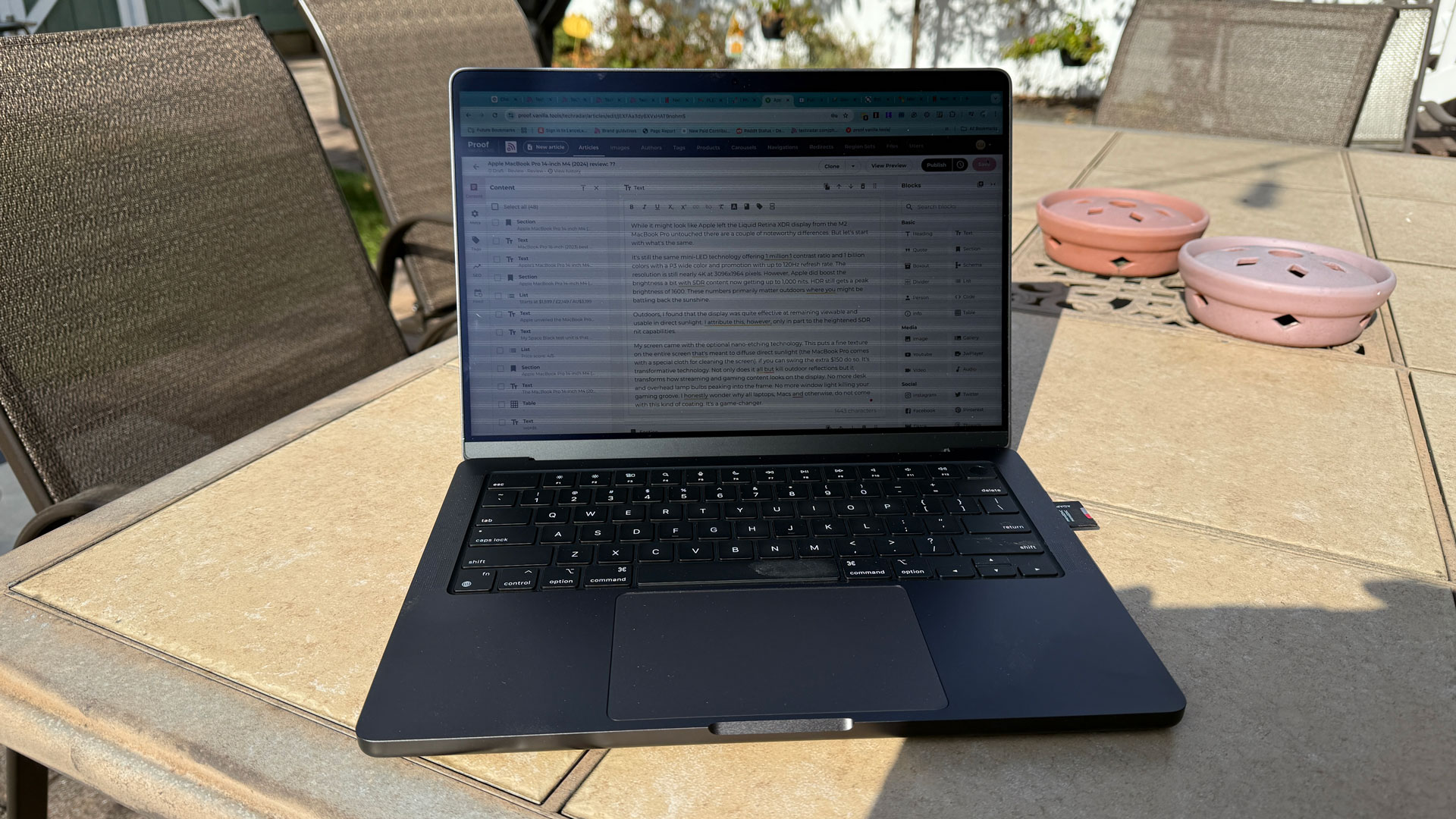
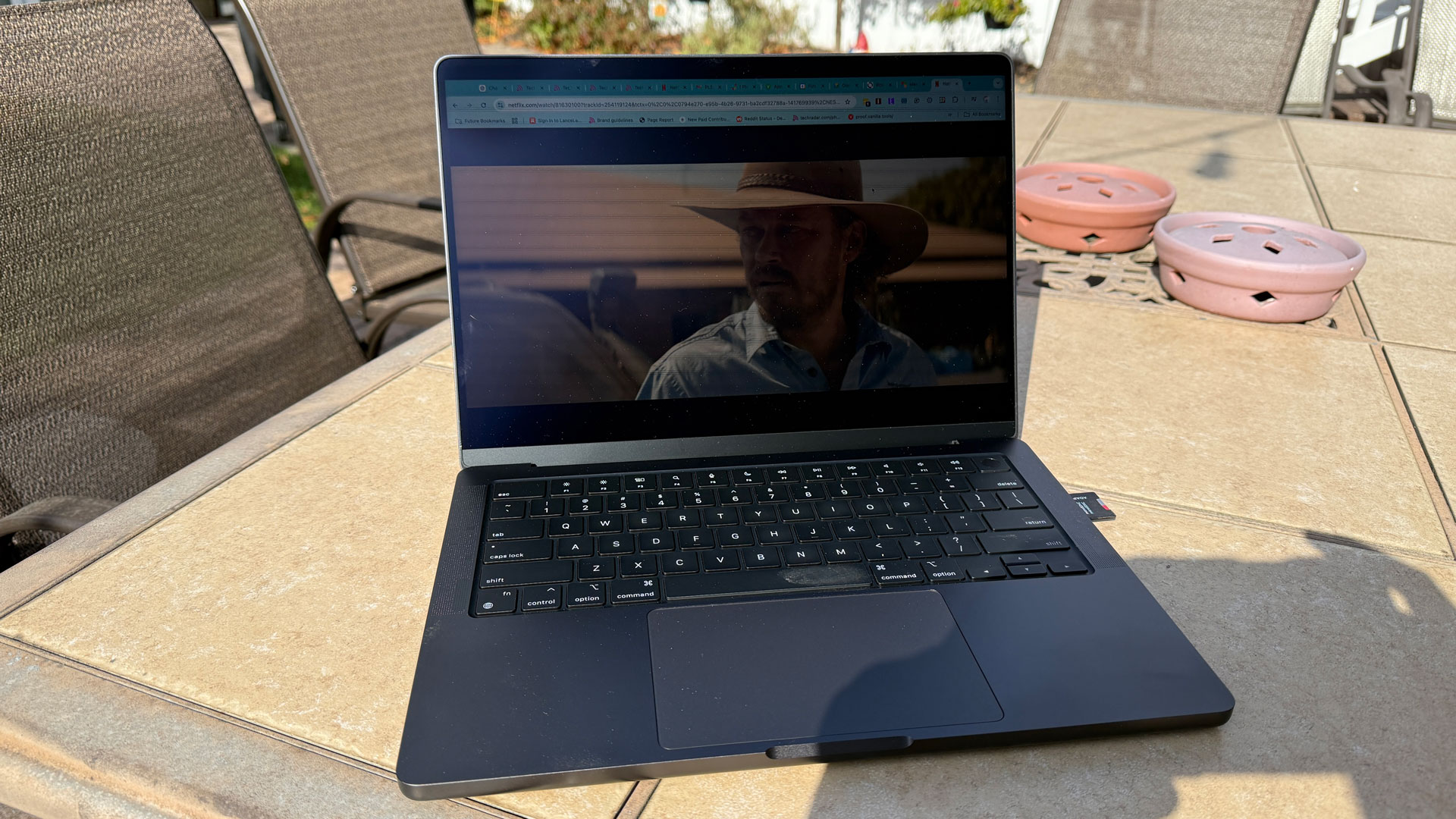
The 14.2-inch screen is big enough for lots of side-by-side app work. It's the perfect canvas for photo editing in Adobe Lightroom and video work in FinalCut Pro. but is also well suited to lighter productivity (like my efforts to write this review), email, and web browsing. It's not a touch screen because Apple refuses to bring that technology to Macs, even as the touch-friendly iPad Pro becomes more and more Mac-like. The trackpad is large enough that I don't miss touching a screen (as I did for years for Microsoft Surface Pro) but I can't help but wonder how a MacBook Pro with a touch, and Apple Pencil-friendly, display would alter the way we use this laptop.
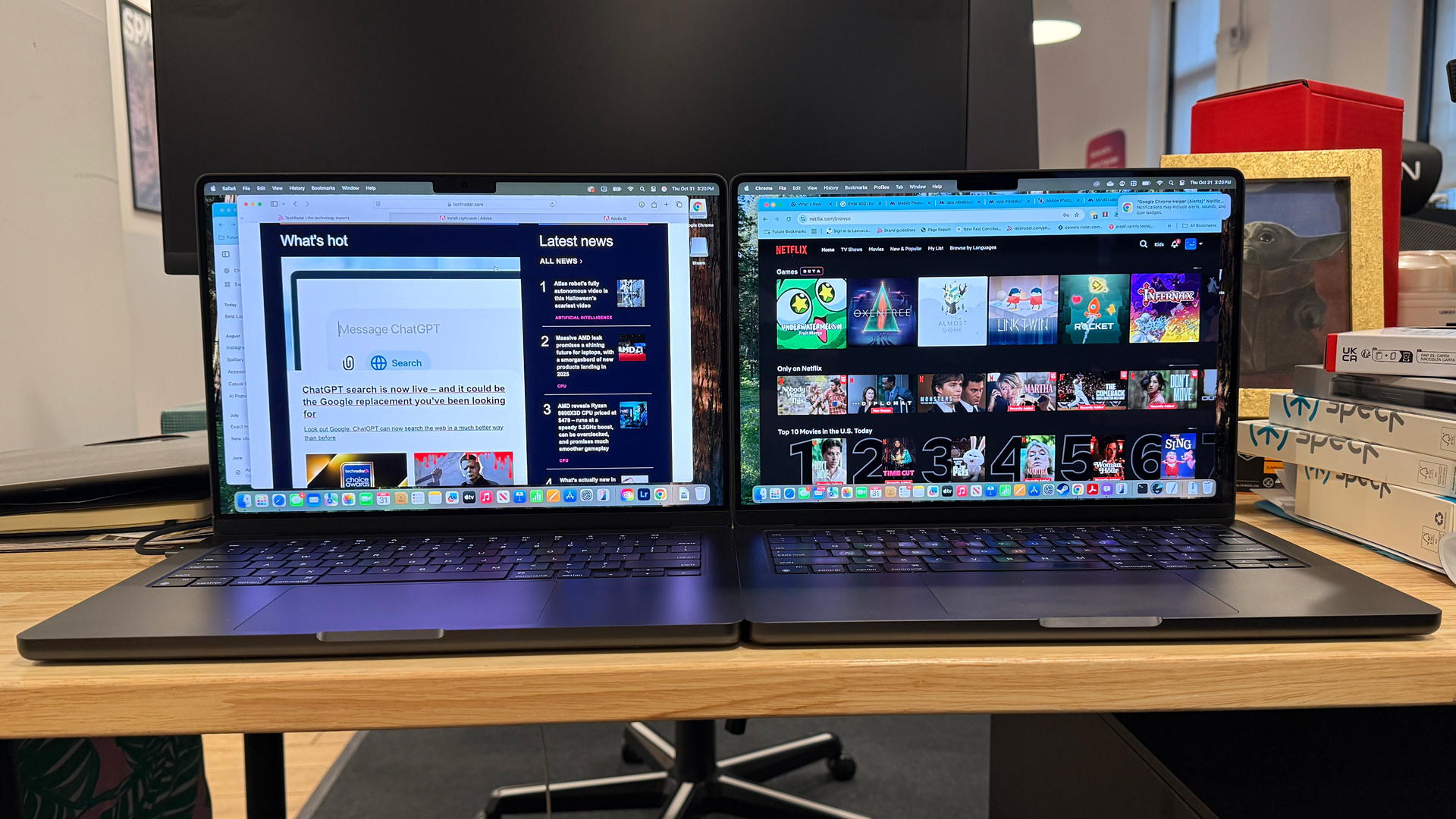
The other display change relates less to what you'll see on the Liquid Retina XDR panel and more to how others will see you through it. Apple has upgraded the FaceTime camera, which sits at the top of the display in a cutout notch, with a 12MP ultrawide that supports its Center Stage technology. Center Stage takes the full 12MP ultrawide frame and narrows the viewport so that you are always centered in the frame. It doesn't matter if you lean left or right or get up and walk around the room, Center Stage will follow. It's a useful feature in FaceTime – I tested it on a call with my wife who wondered why I kept moving around – and also on Zoom, where it worked well but was not useful in a broadcast video situation, so I turned it off. Center Stage did not work for me in Google Meet, where I conduct most of my video meetings.
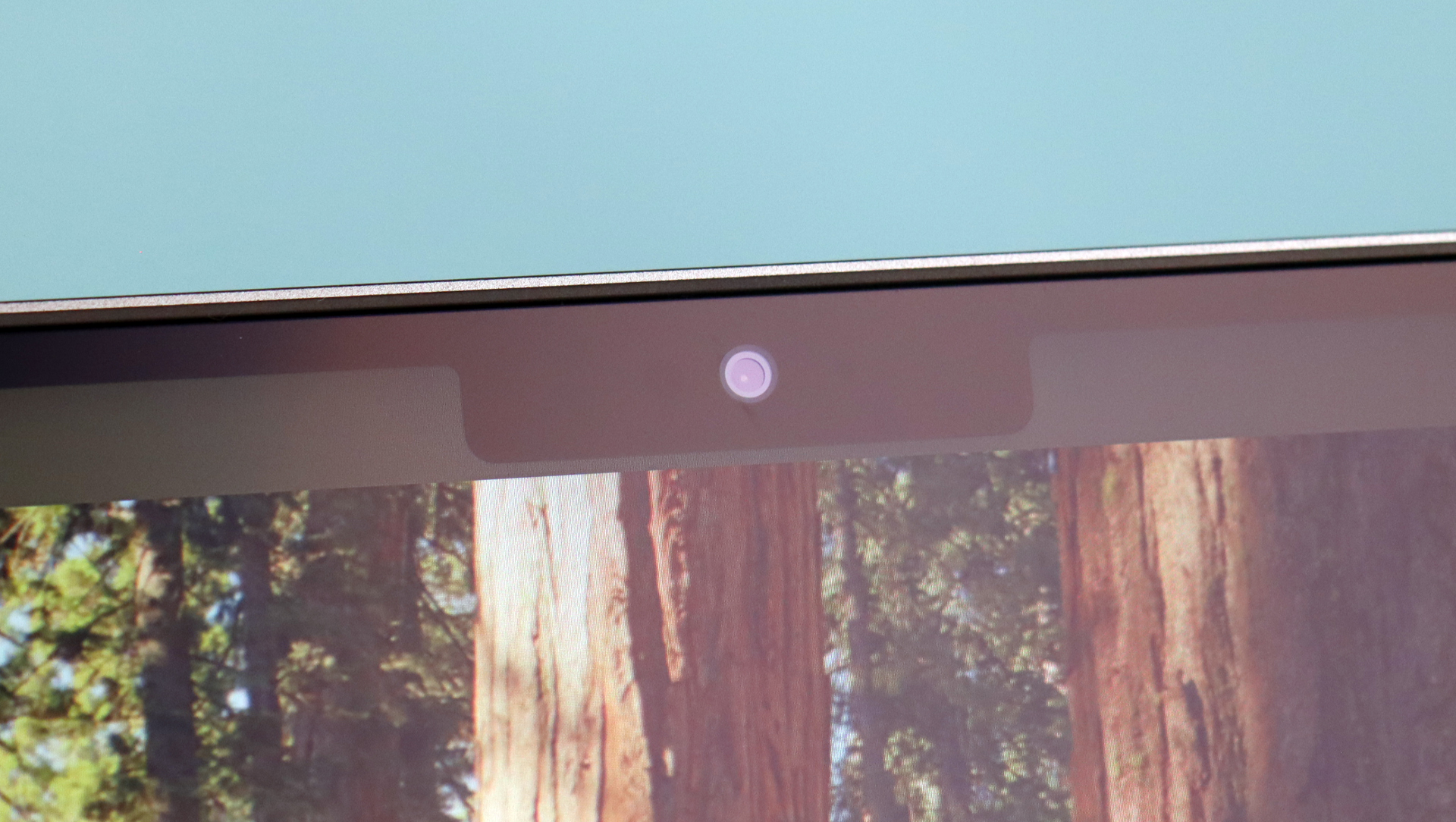
- Display score: 4.5/5
Apple MacBook Pro 14-inch M4 (2024) review: Performance
- M4 has the Pro power most need
- macOS Sequoia is flexible and easy to use
- AAA gaming on a Mac is real
Here’s how the MacBook Pro 14-inch (2024) performed in our suite of TechRadar and Future Labs benchmark tests:
Cinebench R23 CPU: Single-Core: 2,180 Multi-Core: 13773
Geekbench 6.3 Single-Core: 3,845; Multi-Core: 15,136
Geekbench AI: Single: 4,764 Half Precision: 7,837 ; Quantized Score: 6.357
PugentBench Photoshop: 10,542
PugentBench Premier Pro: 4,618
Blender: Monster: 115.8; Junkshop: 73.17; Classroom: 188.1
Battery Life (web site surfing rundown): 18 hours and 31 minutes
The last time we reviewed a 14-inch MacBook Pro, it was running an M2 Pro. The base M4 inside my test unit has similar but not equal specs. It's still a 10-core CPU, but where the M2 Pro had a 16-core GPU, the M4 starts with 10 cores. However the M2 chips were all built on a 5-nanometer process, and the M4 line is on the more efficient three nanometers, which could lead to a better combination of power and efficiency.
The Neural Engine, which handles a lot of onboard machine learning and AI tasks, still has the same 16 cores.
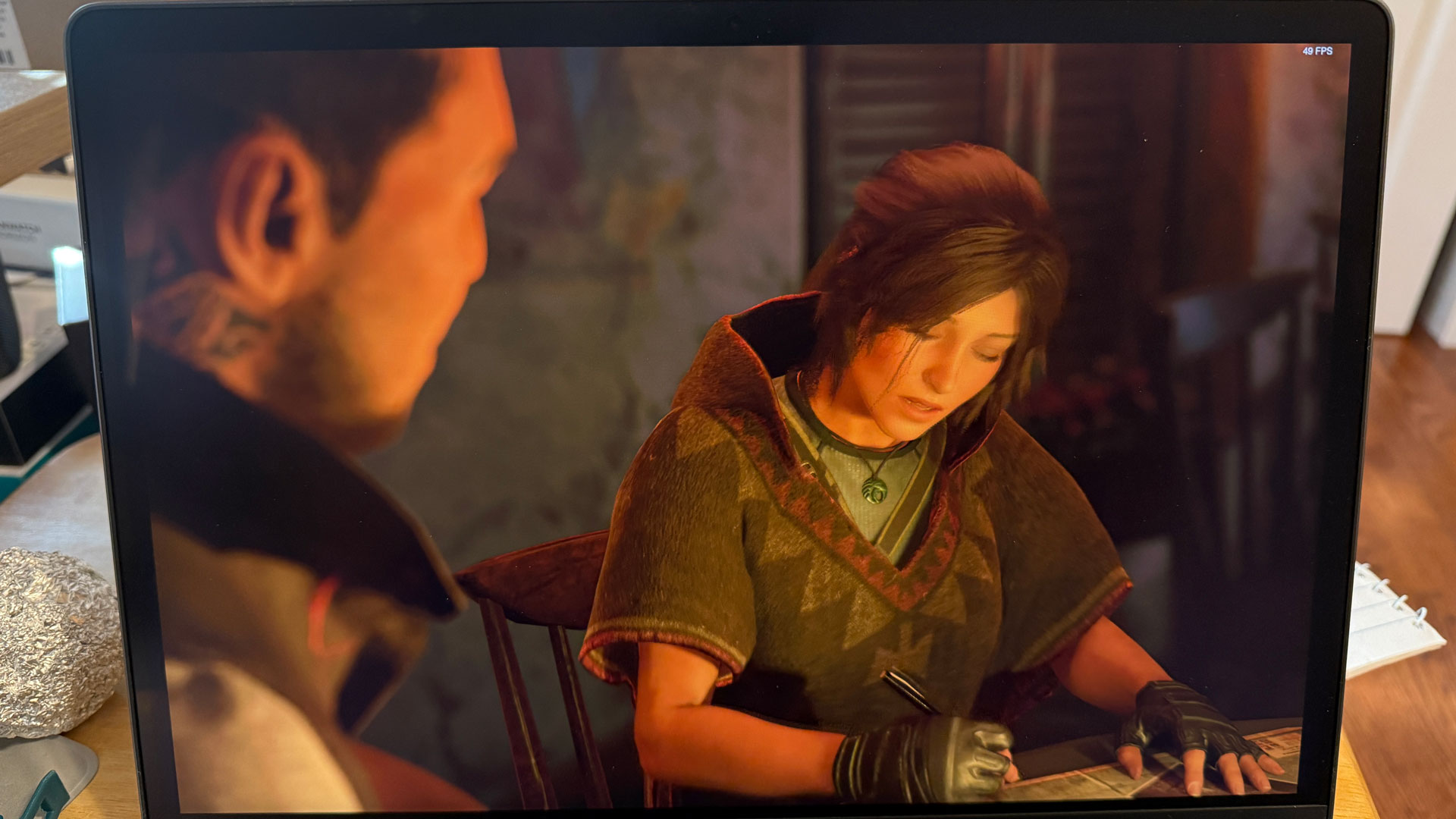
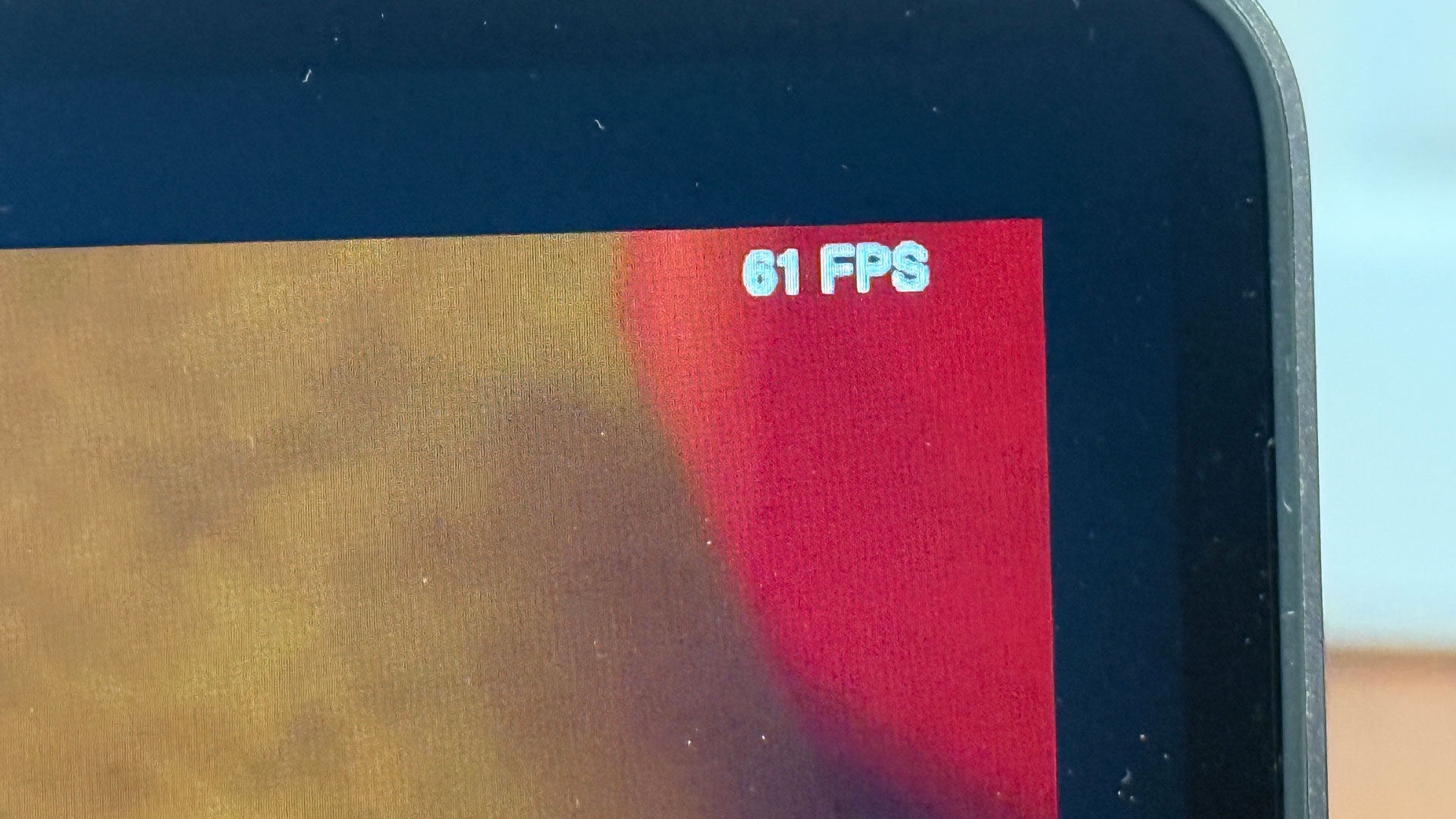
Apple is now backing all of its new Macs with at least 16GB of RAM. This pays dividends in AI (Apple Intelligence is on board) and graphically intense operations like ray tracing, which helps make games like Lies of P look incredible on the MacBook Pro 14.
In benchmark testing, I found the numbers in line with the M4 performance I saw from the iPad Pro 13 inch. Geekbench 6.3 numbers measurably exceed those of the M3 in my MacBook Air.
When I played Shadow of the Tomb Radar, Steam's internal frames per second counter showed I got anywhere between 42fps and 62fps. To my eyes, there was no tearing or dropped frames.
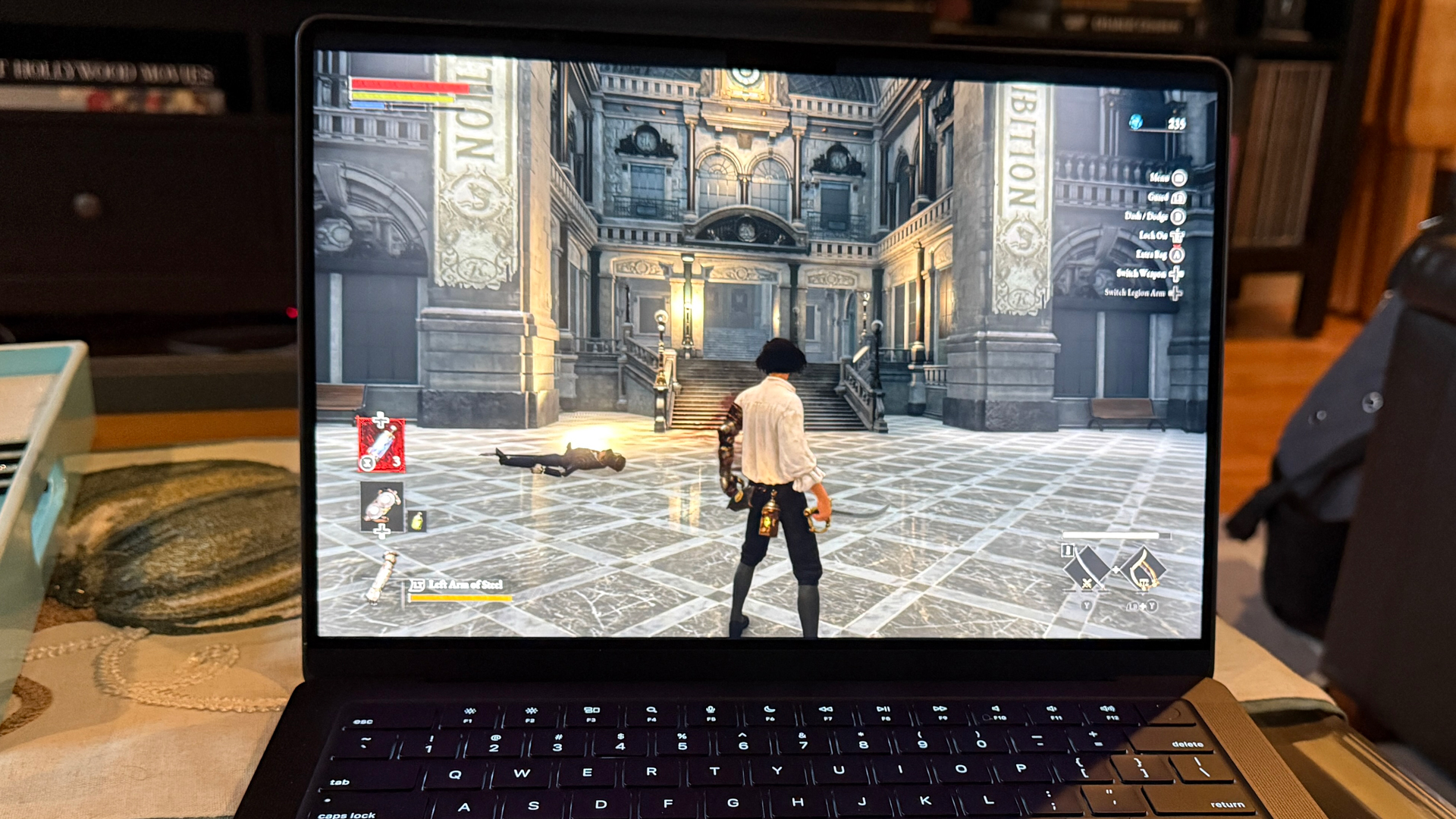
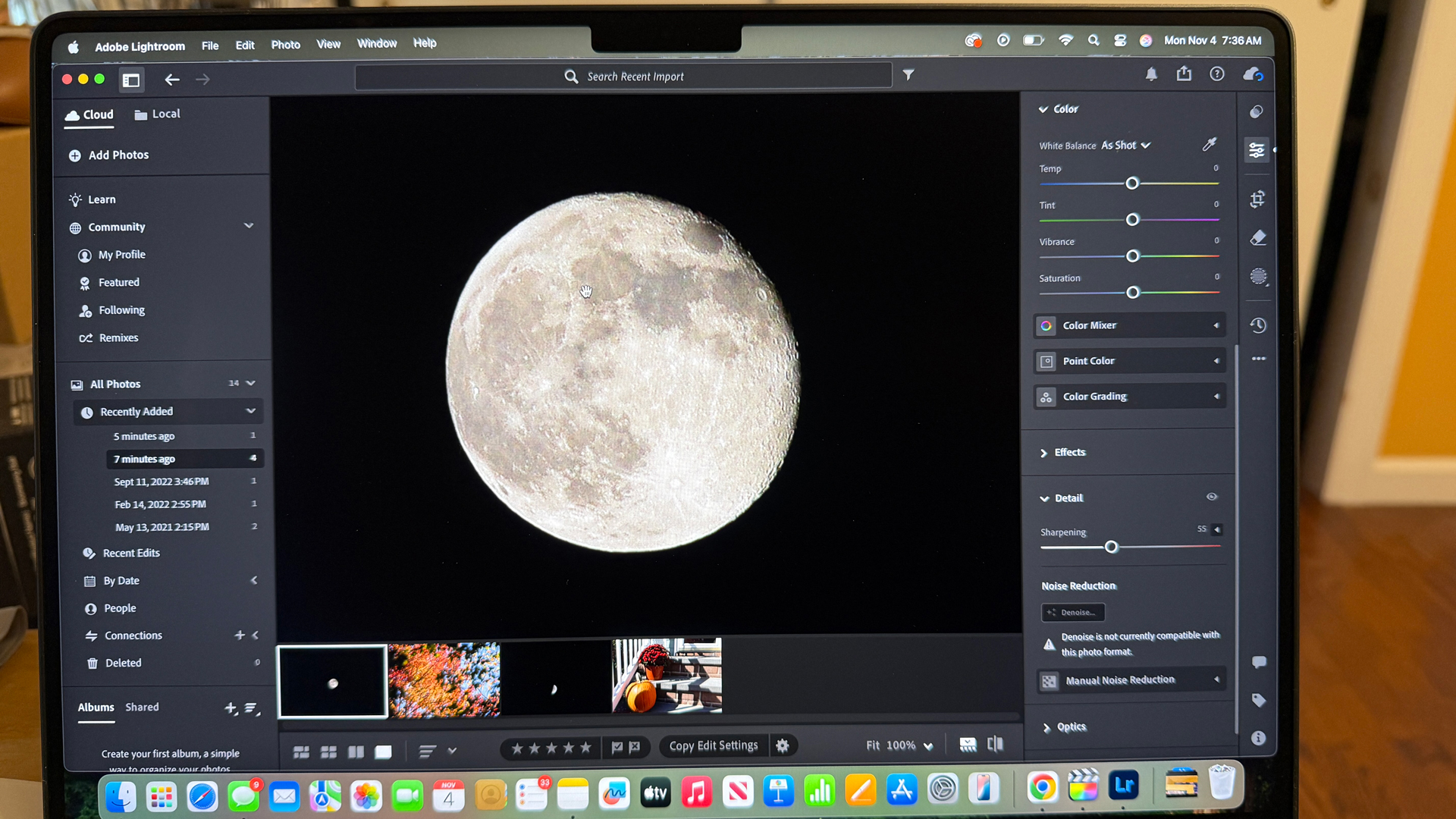
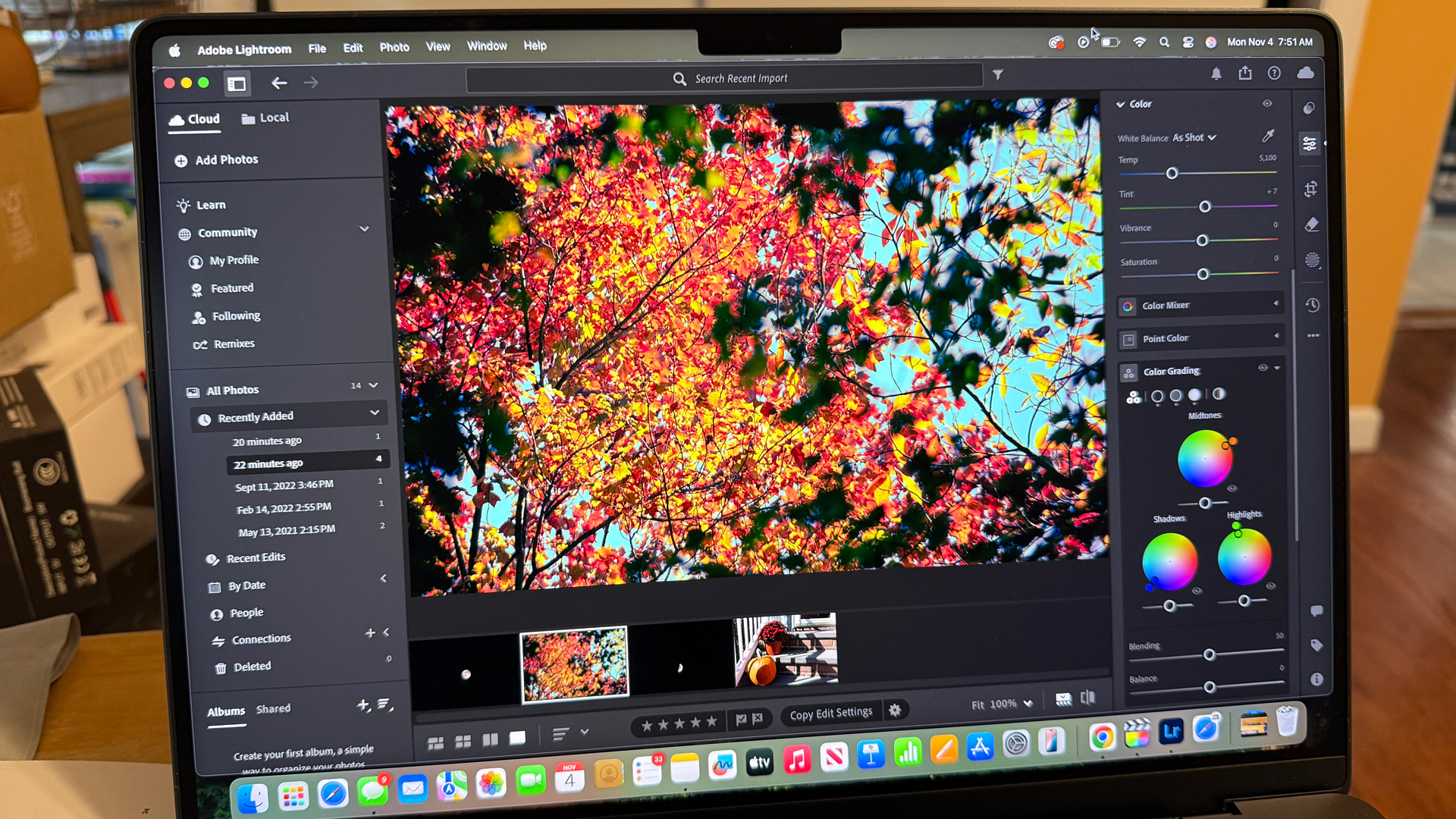
Numbers only tell you so much, and what matters most is real-world experience. I did do a fair amount of gaming on this MacBook Pro. As I noted above, the nano-texture screen makes games look amazing. In my Lies of P sessions (I connected an X Box controller via Bluetooth), I took note of the rich atmospherics, from rain to fire, and the level of detail that never descended into unwatchable blurs. Gaming on the MacBook Pro benefits from macOS Sequoia's Game Mode, which prioritizes gaming tasks for truly smooth and responsive performance.
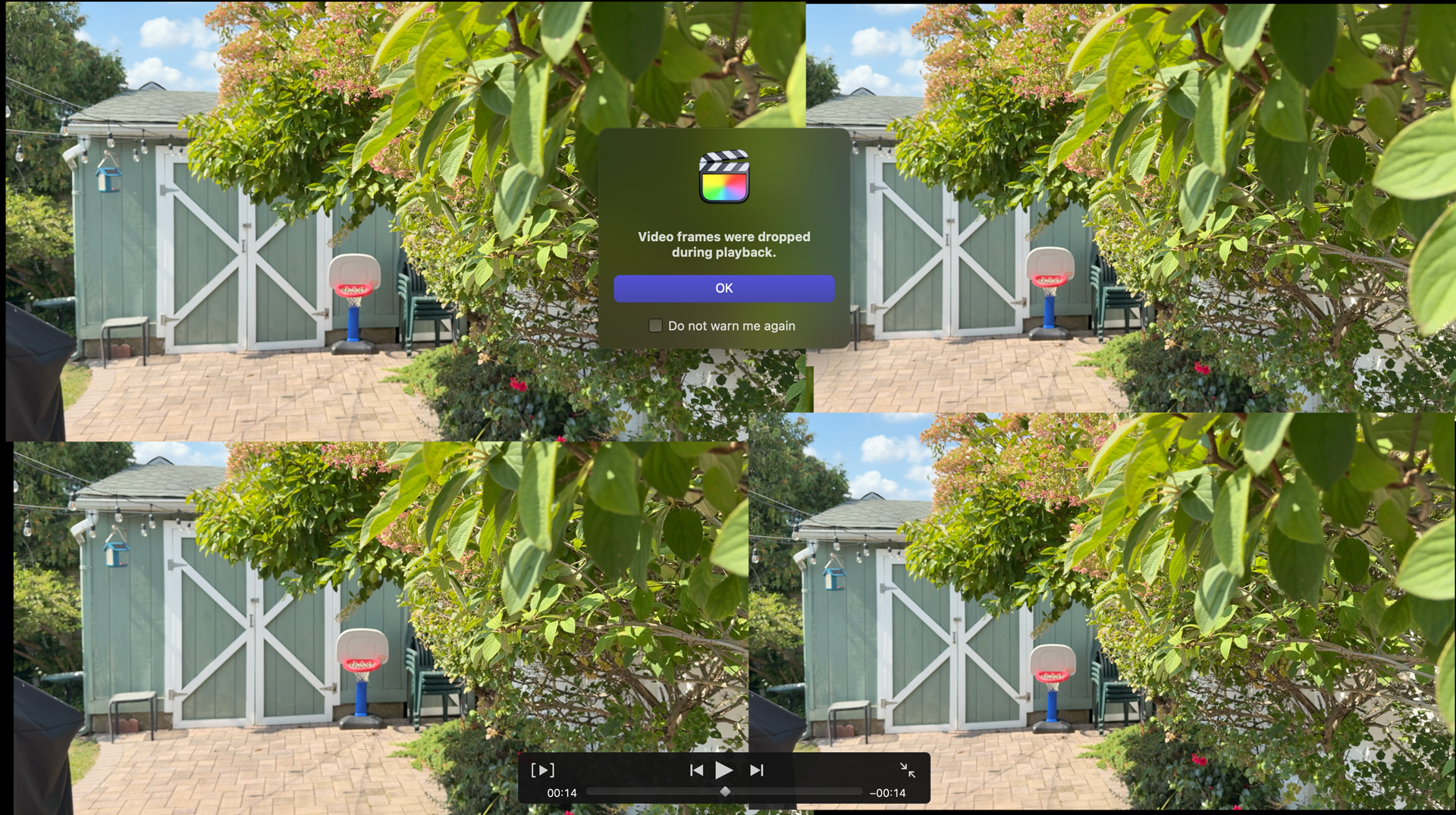
In FinalCut Pro, I edited four 4K 30fps streams at once, which played back smoothly in full-screen preview. However, when I tried the same thing with four 4K 120fps video clips shot on the iPhone 16 Pro Max, full-screen playback started dropping frames – an on-screen message confirmed this. It was one of the rare times I found the limits of Apple silicon.
Editing raw photos in Adobe Lightroom is a breeze. It's also worth noting that I rarely shut down other apps while I performed these operations, and as I noted earlier, the only times I heard the fans were during console-grade gameplay and Cinebench 23 benchmarking.
Keep in mind that my tests were all with the base M4 Apple silicon; imagine what you can expect from the M4 Pro and M4 Max.
Connectivity is mostly what you would expect, with support for Bluetooth 5.3 and Wi-Fi 6E. I am a bit disappointed, though, that Apple didn't future-proof the laptop a bit with Wi-Fi 7 support.
- Performance score: 5/5
Apple MacBook Pro 14-inch M4 (2024) review: Software
- macOS 15.1
- Some Apple Intelligence
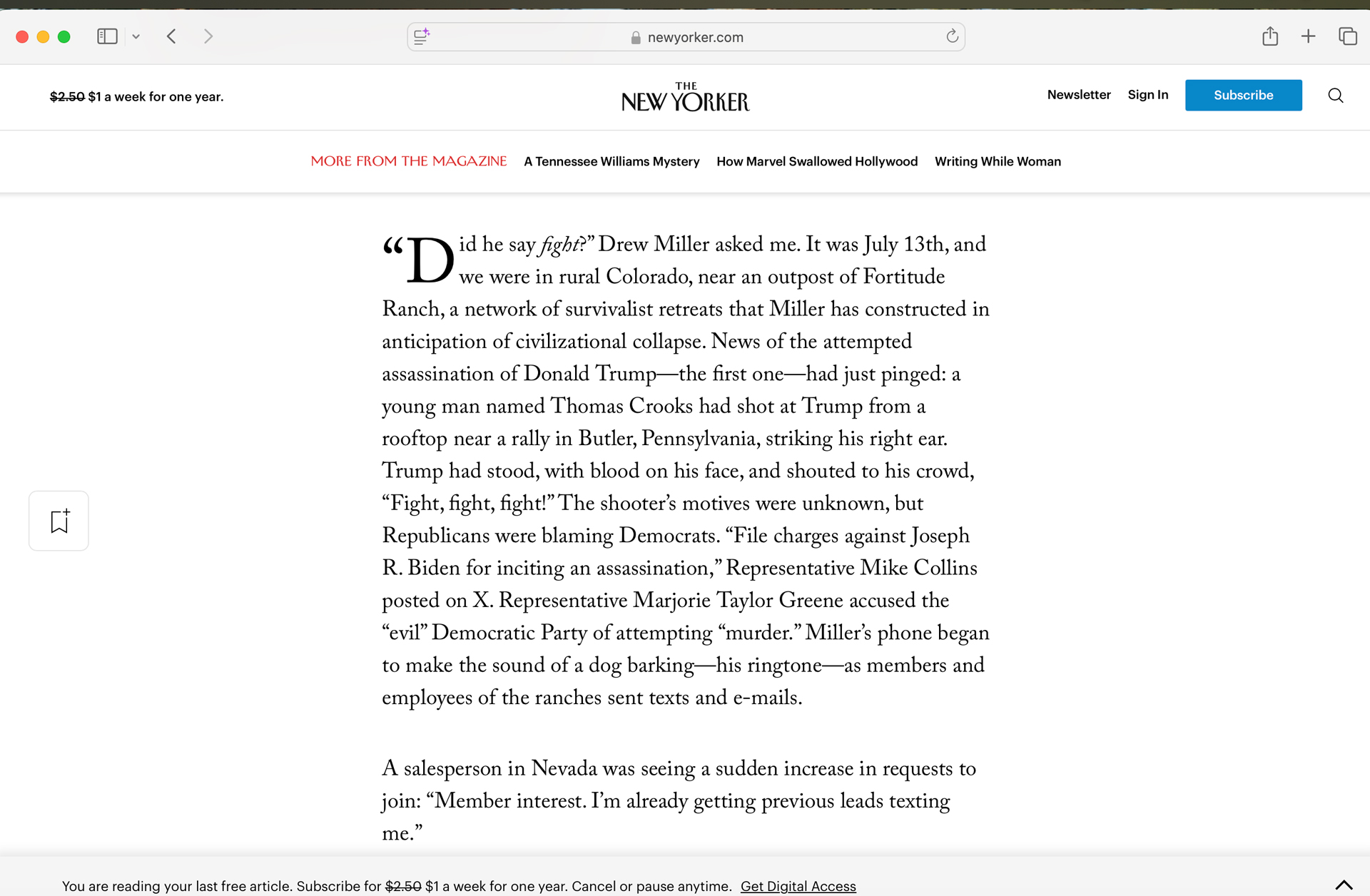

macOS Sequoia (macOS 15.1) has a lot to offer. There's the new Passwords app, which gives you a full-blown application for managing your passwords, and there's the updated Notes, which can now transcribe recordings. It's not as good as the transcription in Voice Recorder on Android (it doesn't identify multiple speakers) but it's still useful.
There are now Highlights in Safari that can take a 3,000-word-plus New Yorker article and boil it down to a one-paragraph summary. I worry that loses the nuance of such a piece, but if you're in a hurry...
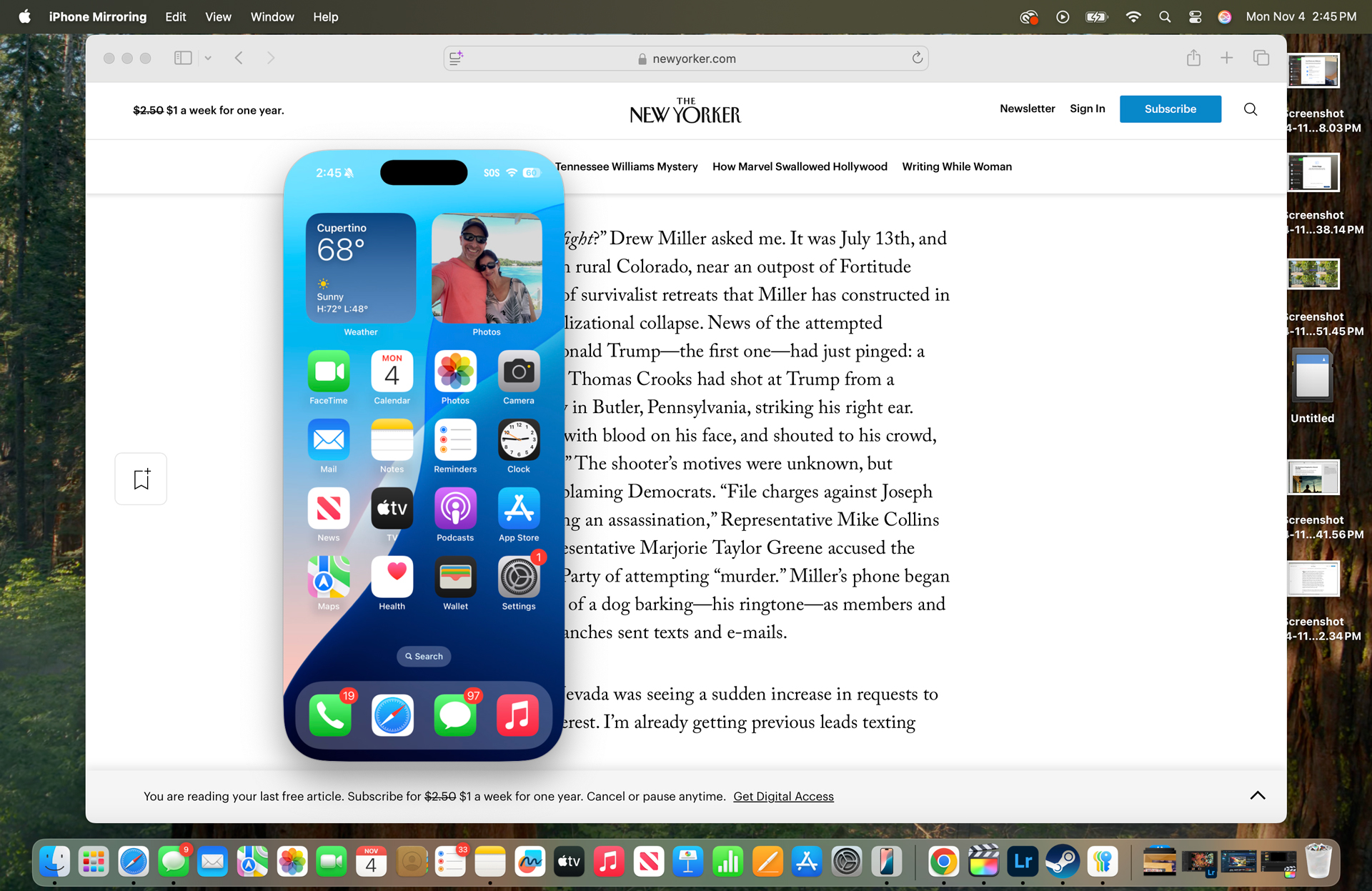
There's also iPhone Mirroring, which lets you access and control your iPhone from the MacBook Pro. It's supposed to be useful when you don't have access to your iPhone (maybe it's just in another room), and I found it easy to connect an iPhone 16 Pro and then have a virtual version of the iPhone on my MacBook Pro 14 desktop. What's even wilder is how I can control the phone from the desktop system. I can message, browse the web, and even drag and drop between the desktop and the iPhone interface. I did notice that while I can open the iPhone camera, I cannot use the MacBook Pro 14 to take a picture with the phone.
Apple Intelligence is here within macOS 15.1, in the form of a redesigned Siri that supports Type to Siri and which can be dragged around the desktop. I found that I could ask Siri how to do things with the MacBook Pro, like find my Wi-Fi settings and opening an app like Notes.
Apple Intelligence puts email summaries at the top of email, and the writing tools are embedded throughout the system. In Notes, I asked the Writing Tools to rewrite my lengthy meeting notes. It did a really good job of boiling it all down to a concise bullet list, which I could also easily undo. This could be very useful.
This is not all of Apple Intelligence. There's no Image Playground for instance, but that will show up with macOS 15.2, possibly by early December.
A taste of AI
During my testing, I did install the macOS 15.2 Developer Beta so that I could get a sample of this MacBook Pro 14 M4's Apple Intelligence capabilities. Because this update is not intended for the public, my thoughts on this dev beta were not considered as part of my final software, performance and overall review score.
First, I was excited to see Clean Up now inside of the Photos app. It works just as it does in iOS 18 on the iPhone, and was useful for removing some unwanted items from my photos.
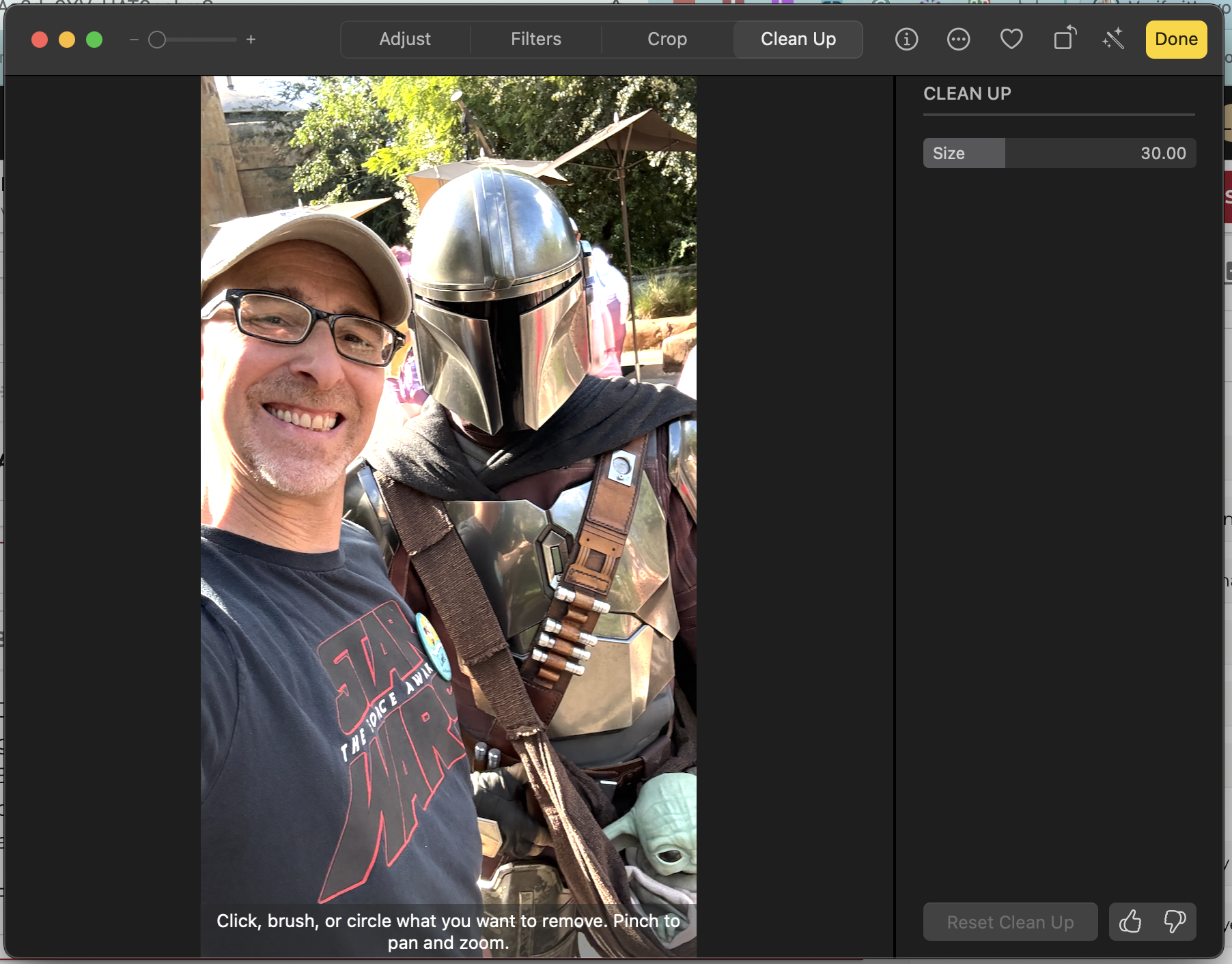
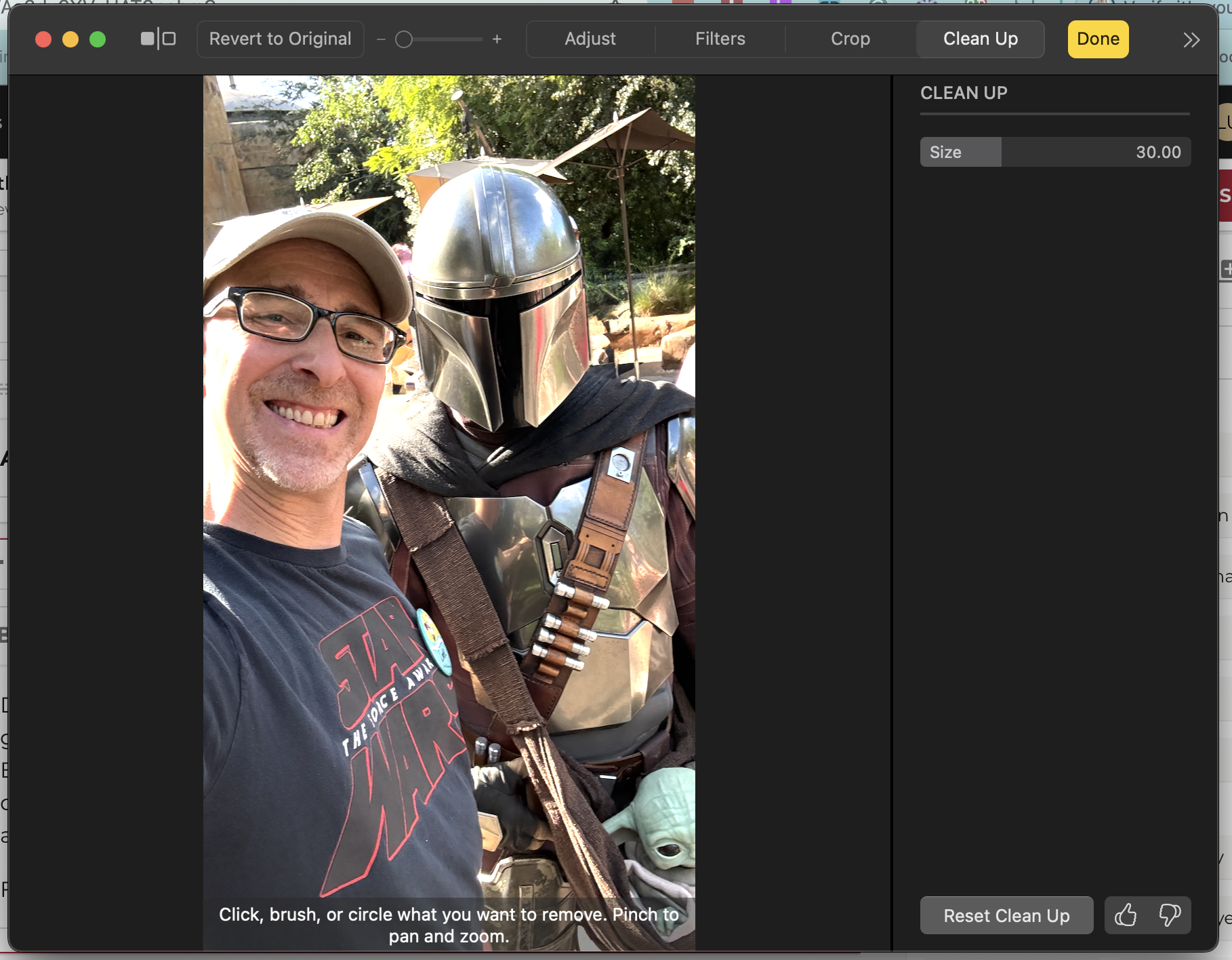
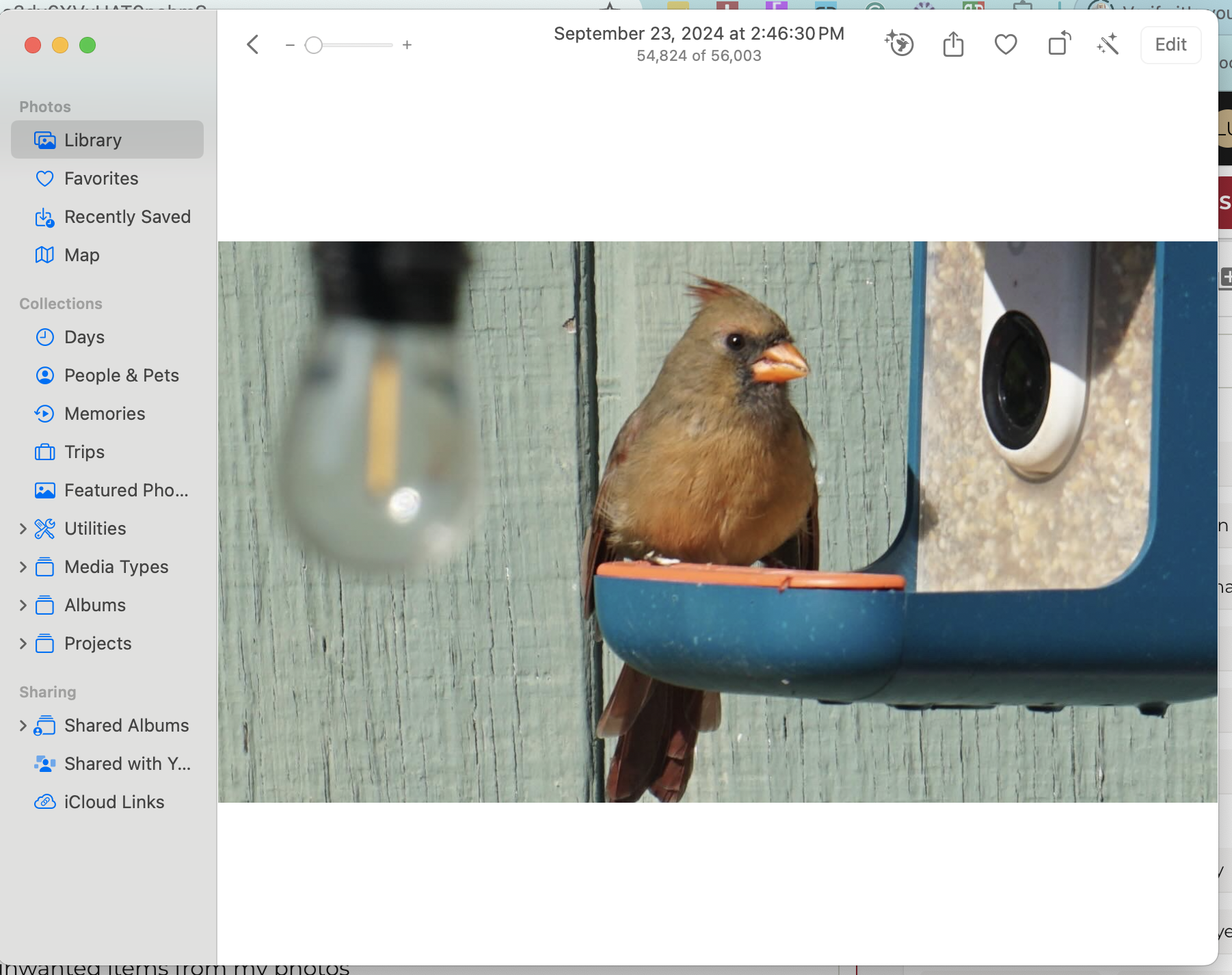
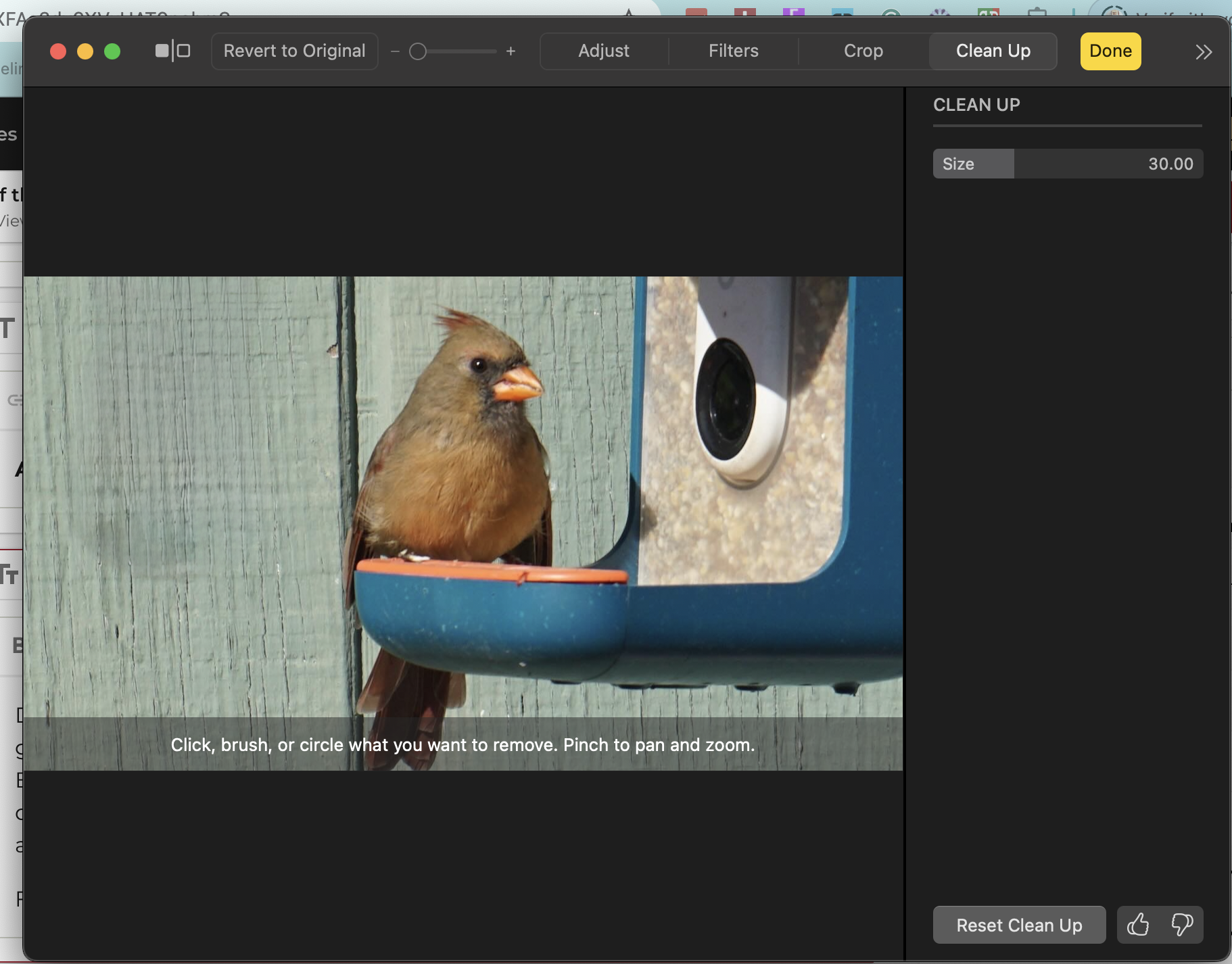
ChatGPT's Siri integration, which I had to enable, is quite smooth, and looks and works as if it's a part of Siri. I used it in the Type to Siri mode, entering my prompt about how to create a goods presentation. The answer I got from ChatGPT through Siri was solid.
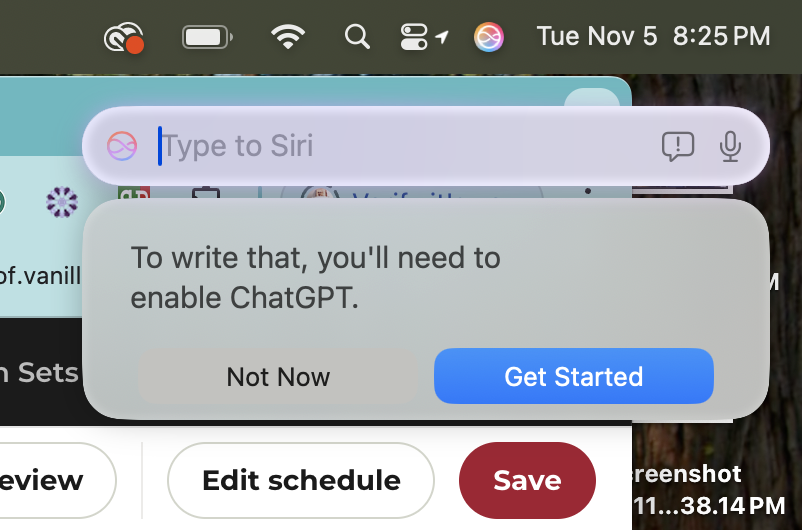
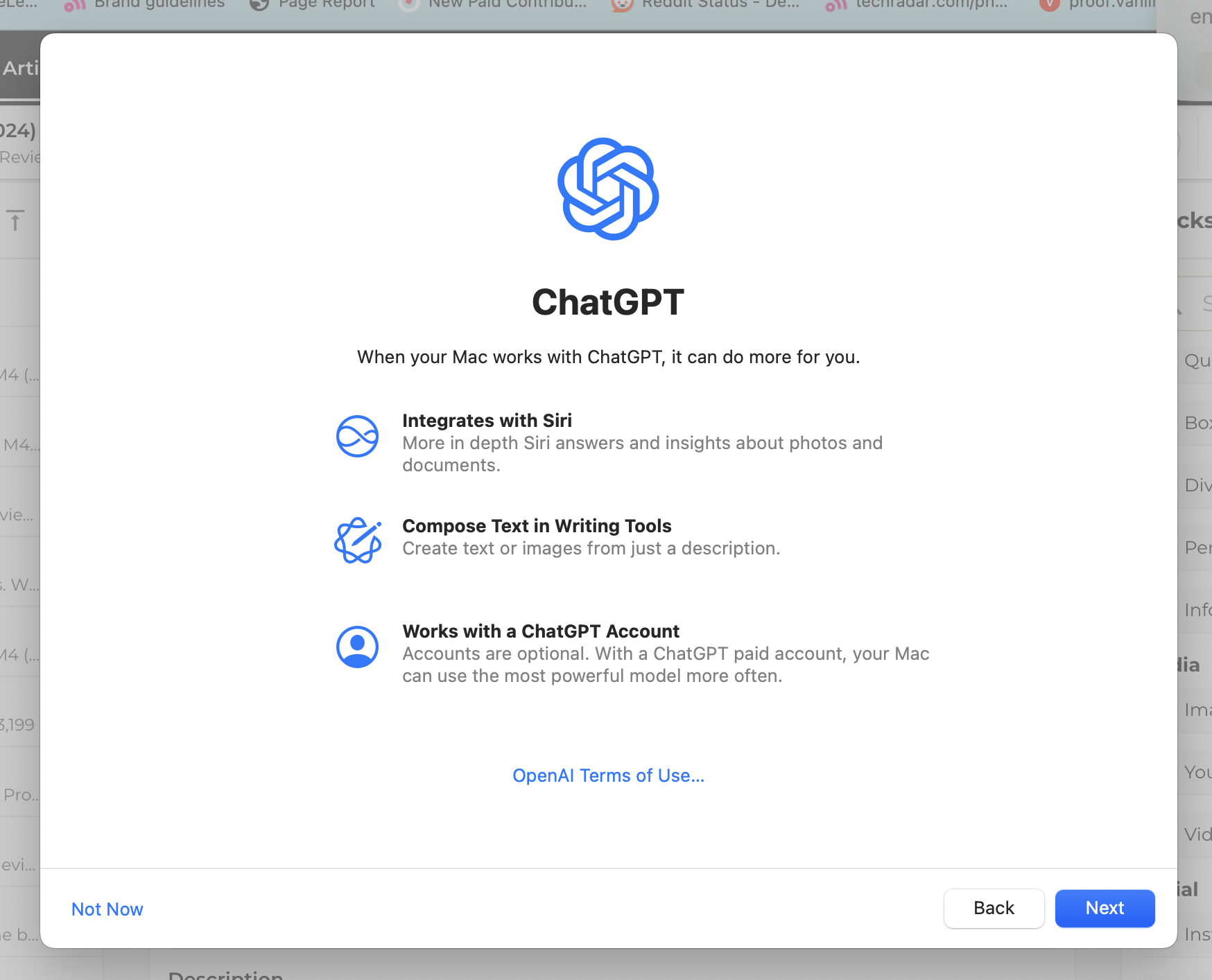
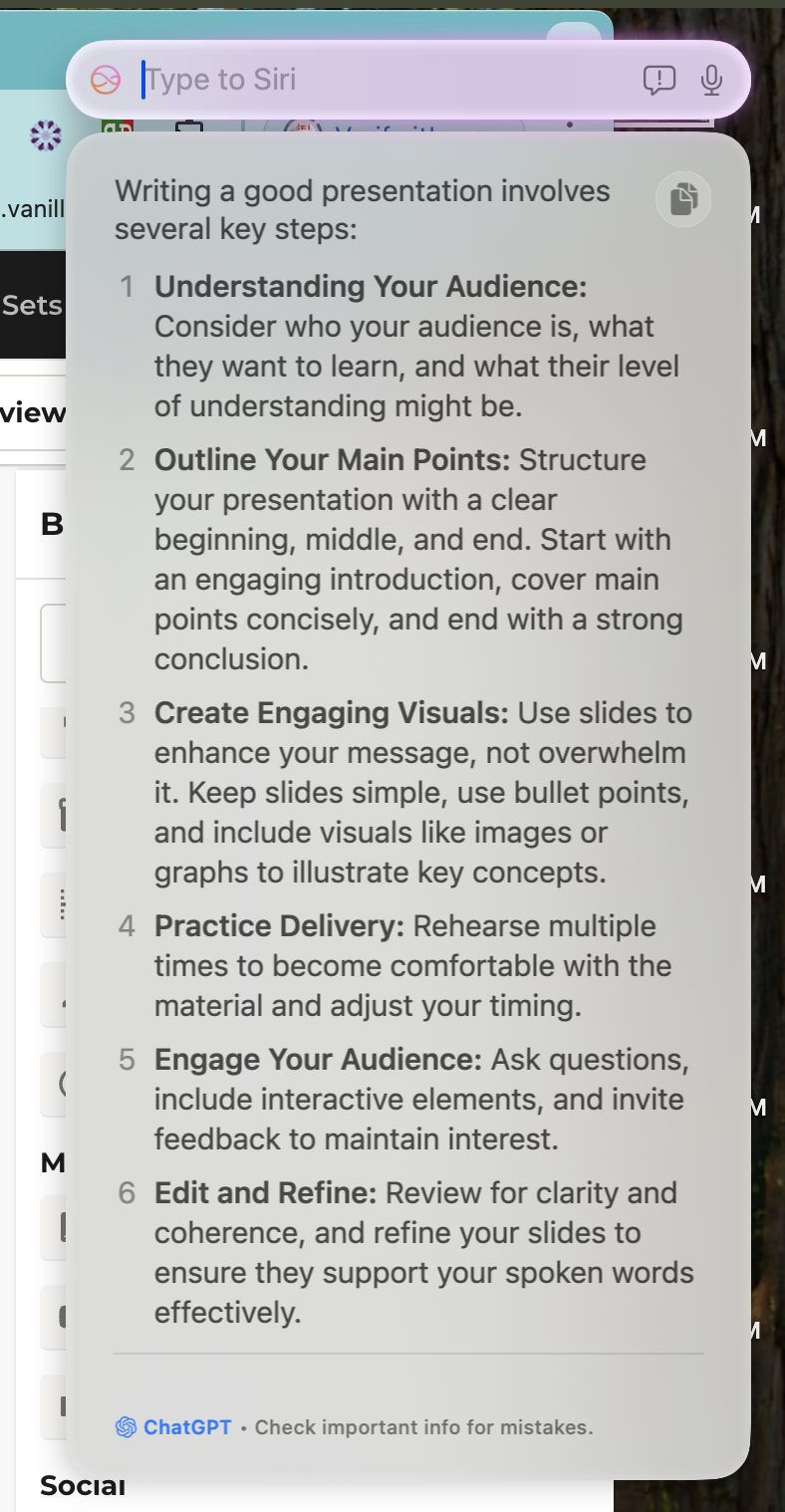
Image Playground, the generative AI image tool which lives in an adorable kitty app icon in the Dock, is also part of this beta, but it's still gated by an invite and, as I write this, I still await mine.
Apple MacBook Pro 14-inch M4 (2024) review: Battery life
- Rated for 24-hour video streaming
- Lasted more than 18 hours in our tests
- Battery life is dependent on activity
The MacBook Pro 14 M4 is, according to Apple's promises, perhaps the first truly all-day laptop, rated to last up to 24 hours on a charge. Naturally, that's if you do nothing but stream seasons 1 through 3 of Stranger Things. Once you start adding in activities like web browsing, and emailing, Slack, gaming, and photo and video editing, those numbers change.
In our Future Labs tests, we found that we could get 18.5 hours of web browsing, which is two hours more than Apple is promising. Once I started gaming, though, battery life took a fast tumble; the system is clearly hard at work rendering the exquisite detail in Lies of P. I heard the fans going full-blast, and noticed the bottom of the laptop got quite warm. My advice is if you want to use the MacBook Pro 14 M4 as a gaming rig, keep the included 70W charger and woven USB-C to MagSafe cable close by.
Speaking of that charger; when I drained the system to zero, I was able to use it to recharge the MacBook Pro 14 M4 to 43% in 30 minutes. That's a bit less than the 50% I was expecting. To fully recharge, it took more than an hour.
I've had incredible battery experiences with the MacBook Air and its M3 chip. I can already see that, in normal use, the MacBook Pro 14 M4 is a sun-up-to-sun-down kind of system. That's impressive, and a big win for Pro fans.
- Battery score: 4.5 / 5
Should you buy the Apple MacBook Pro 14-inch M4 (2024)?
Buy it if...
You want portable power without breaking the bank
The MacBook Pro 14-inch M4 (2024) is a good blend of performance, portability, and reasonable price.
You want sunrise-to-sunset battery life
You can easily get a day of activity with the power-sipping system
You’re Team Apple
There are great benefits to adding a MacBook when you already have an iPhone and an Apple account.
Don't buy it if...
You want the ultimate performance
This is a baseline M4, but the new MacBook Pro comes in M4 flavors that run up to the new M4 Max and a 16-inch display.
You need a touch screen
No MacBook offers it. Try an iPad or a Surface Pro.
You have a 2024 MacBook Pro
Apple hasn't redesigned the MacBook Pro, and the M2 and M4 performance numbers are not that far apart.
MacBook Pro 14-inch M4 (2024) review: Also consider
If our Apple MacBook Pro 14 M4 (2024) review leaves you considering other options, here are two laptops to consider...
Apple MacBook Air (M3, 2022)
The follow-up to one of the best laptops ever released, the 2022 MacBook Air is svelte and sleek, with a larger screen and the same outstanding battery life. If you want a MacBook, but don't need the power of the MacBook Pro 14-inch, this is the one to get.
Check out our Apple MacBook Air (M2, 2022) review
Dell XPS 13 Plus
Its sleek and slim design, combined with a gorgeous OLED screen, great sound quality, and lattice-free keyboard embodies the luxury inherent of an Ultrabook. However, it’s also prone to overheating, and the touch bar is annoyingly inaccessible.
Read more: Dell XPS 13 Plus review
How I tested the Apple MacBook Pro 14 M4 (2024)
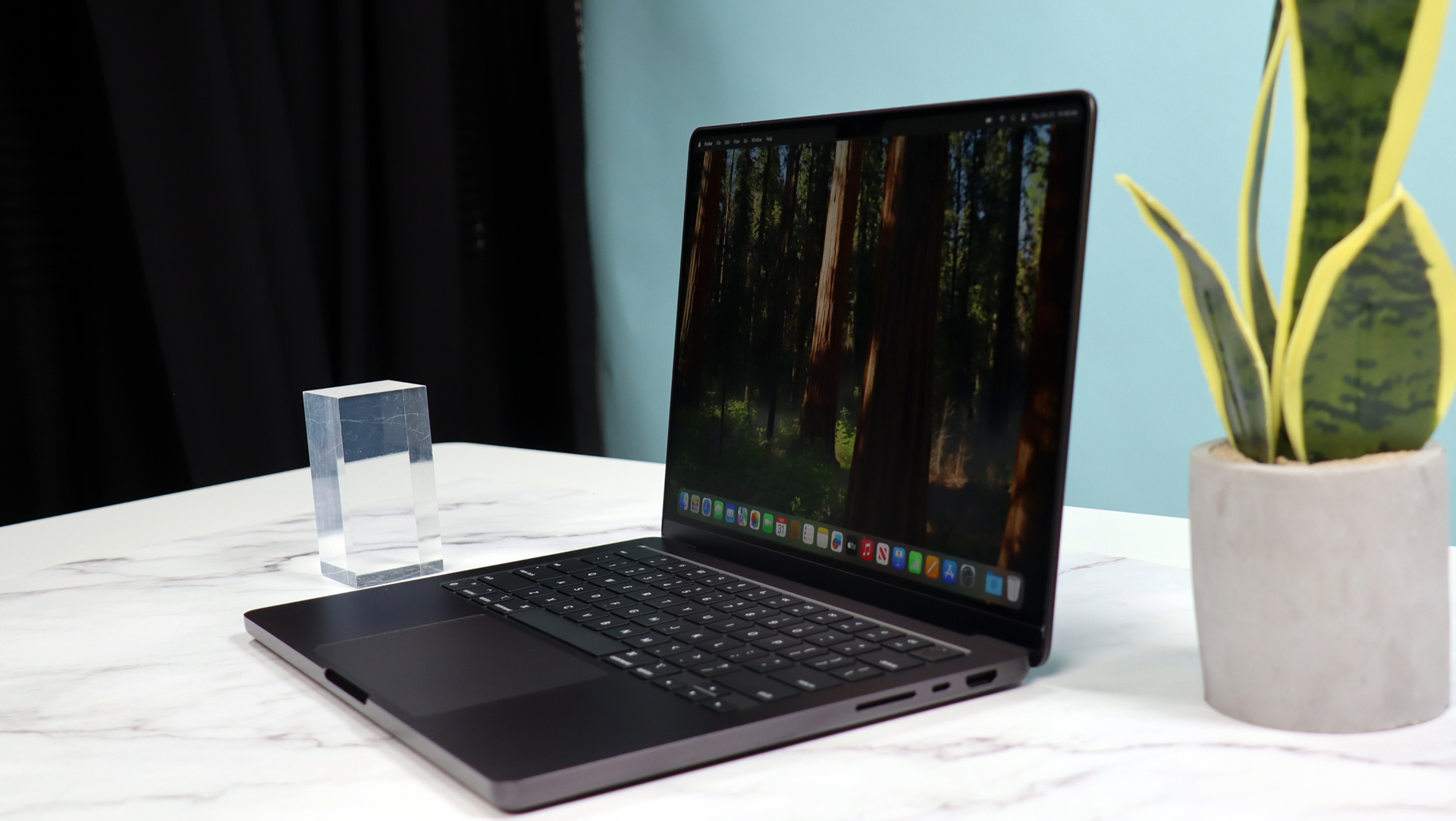
- I spent more than a week with the MacBook Pro 14 M4 (2024)
- I used it as an everyday productivity, creativity, and entertainment device
- I ran benchmarks
Apple provided me with the base MacBook Pro 14 M4 system, and I used it every day to test and help craft this review. I set it up as a work system, and as one for production and play. I used it indoors and outdoors.
First reviewed November 2024
- Details
Microsoft Surface Pro 11 review: A new generation of Windows computers
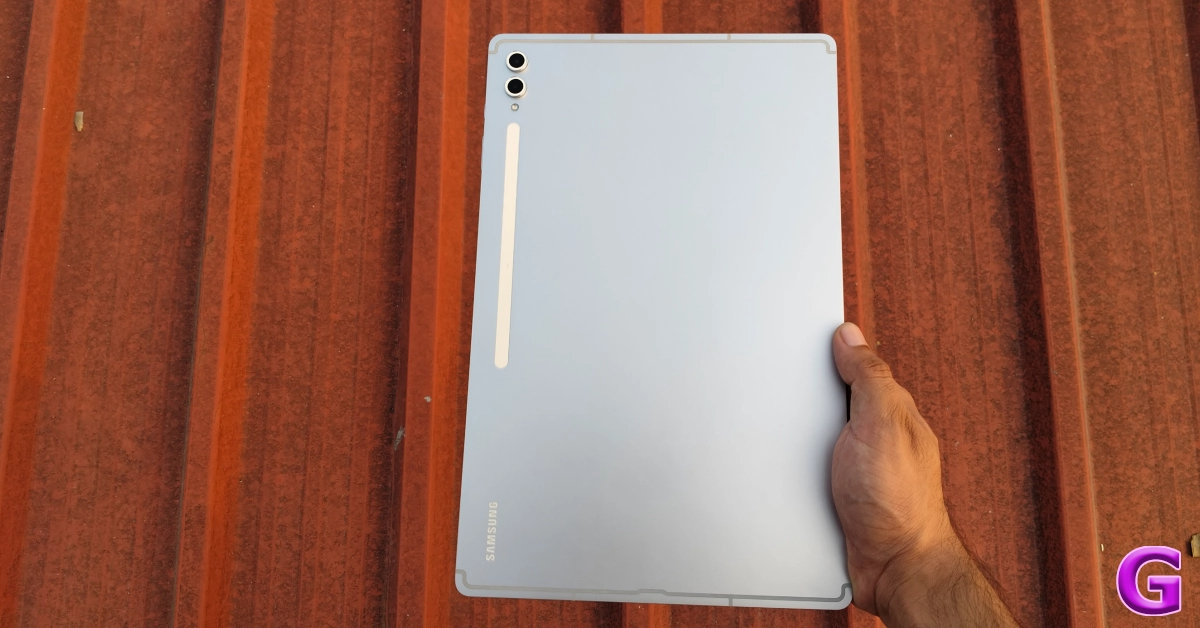
- Details
Samsung Galaxy Tab S10 Ultra Review: The ideal laptop alternative?
Android tablets primarily operate in the midrange segment apart from one big exception – the Samsung Galaxy Tab S Series. The ‘Ultra’ variant in this lineup is typically the one you should go for if you’re interested in replacing your laptop with a sleek slate. Samsung’s flagship is a clear upgrade from its Android peers in terms of hardware, photography skills, and performance. This is also the reason why they cost north

- Details
Asus Zenbook S14 OLED Review: Impressive ultrabook covering all essentials

- Details
Asus Zenbook S 16 laptop review: neural module and AMD Ryzen AI 9 HX 370 chip with the most powerful integrated graphics
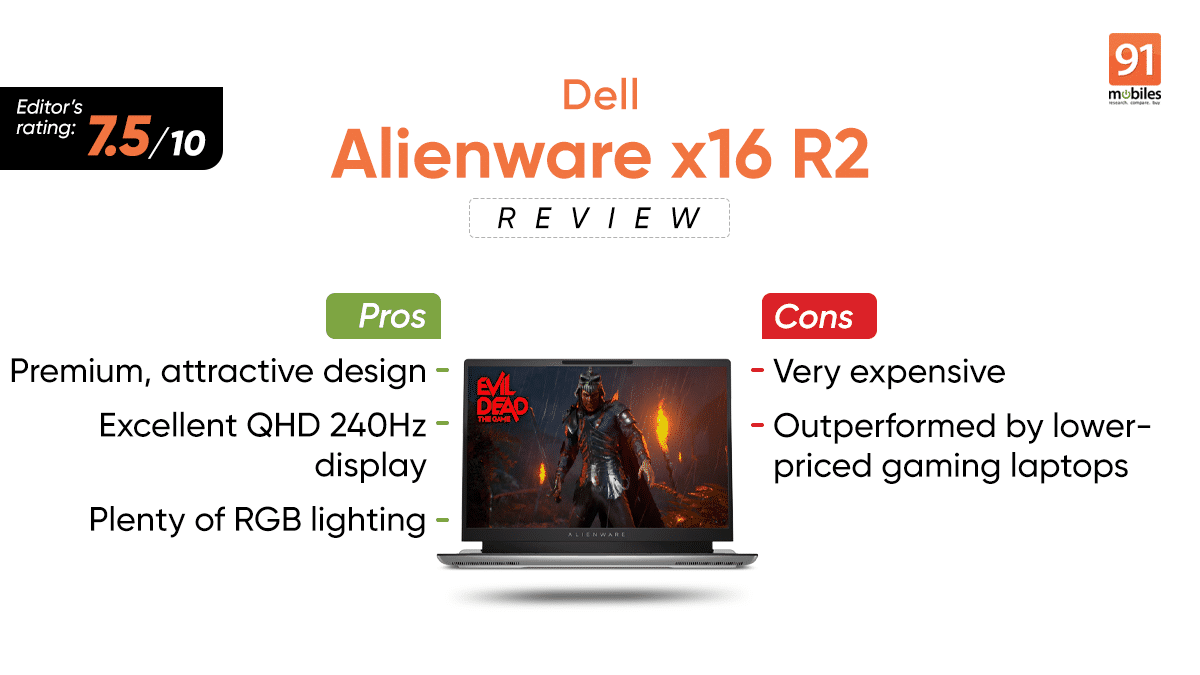
- Details
Dell Alienware x16 R2 (CANX162CTO03RIN) Laptop (Core Ultra 9/32 GB/1 TB SSD/Windows 11/16 GB) Laptop Review - Pros and cons, Verdict
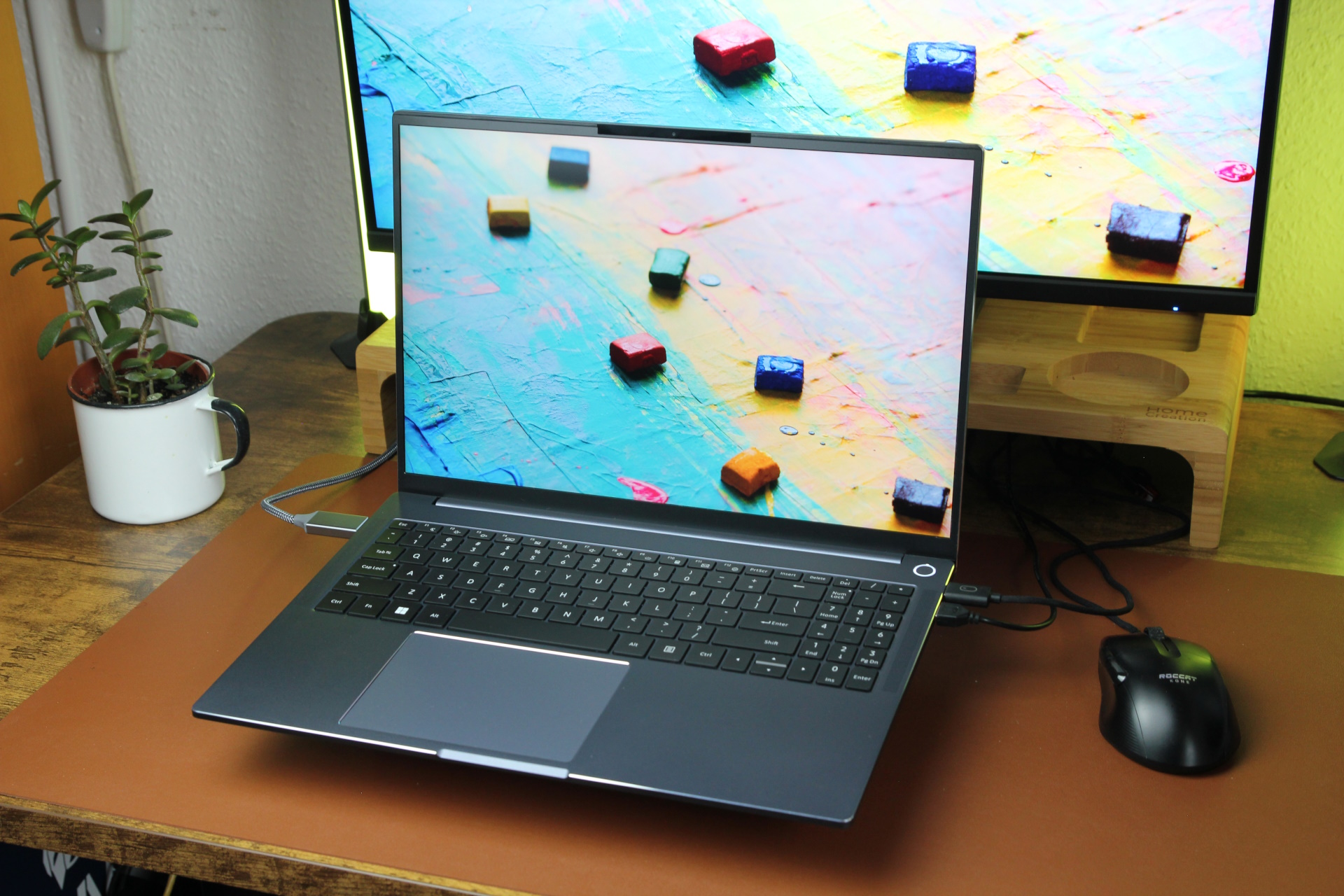
- Details
Ninkear A16 Pro laptop review: Affordable, powerful and quiet during use

- Details
How does Notebookcheck test laptops and smartphones? A behind-the-scenes look into our review process
- Details
Samsung Galaxy Book4 Edge 16 Review: Biggest Snapdragon X Elite Laptop - Forbes

- Details
HP EliteBook Ultra G1q Review: Pros, Cons and Verdict
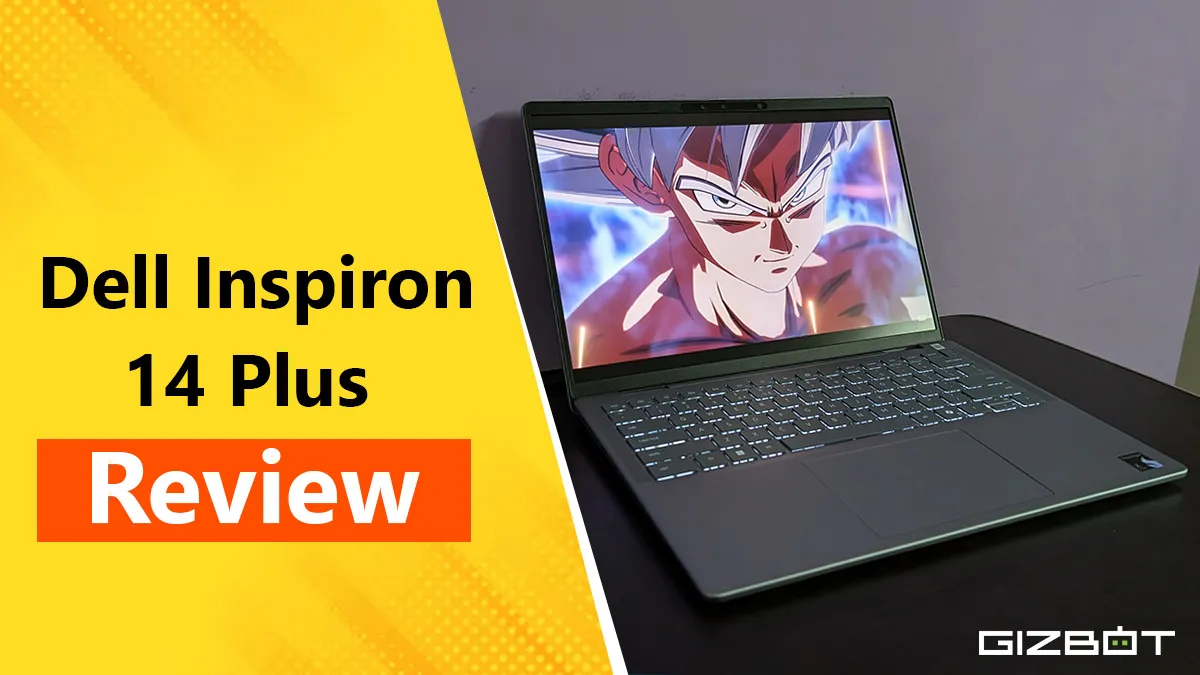
- Details
Dell Inspiron 14 Plus with Snapdragon X Plus Review: Built for Basics, But What About More?

- Details
Framework Laptop 13 AMD 2.8K review: AMD and Linux is a modular match made in heaven
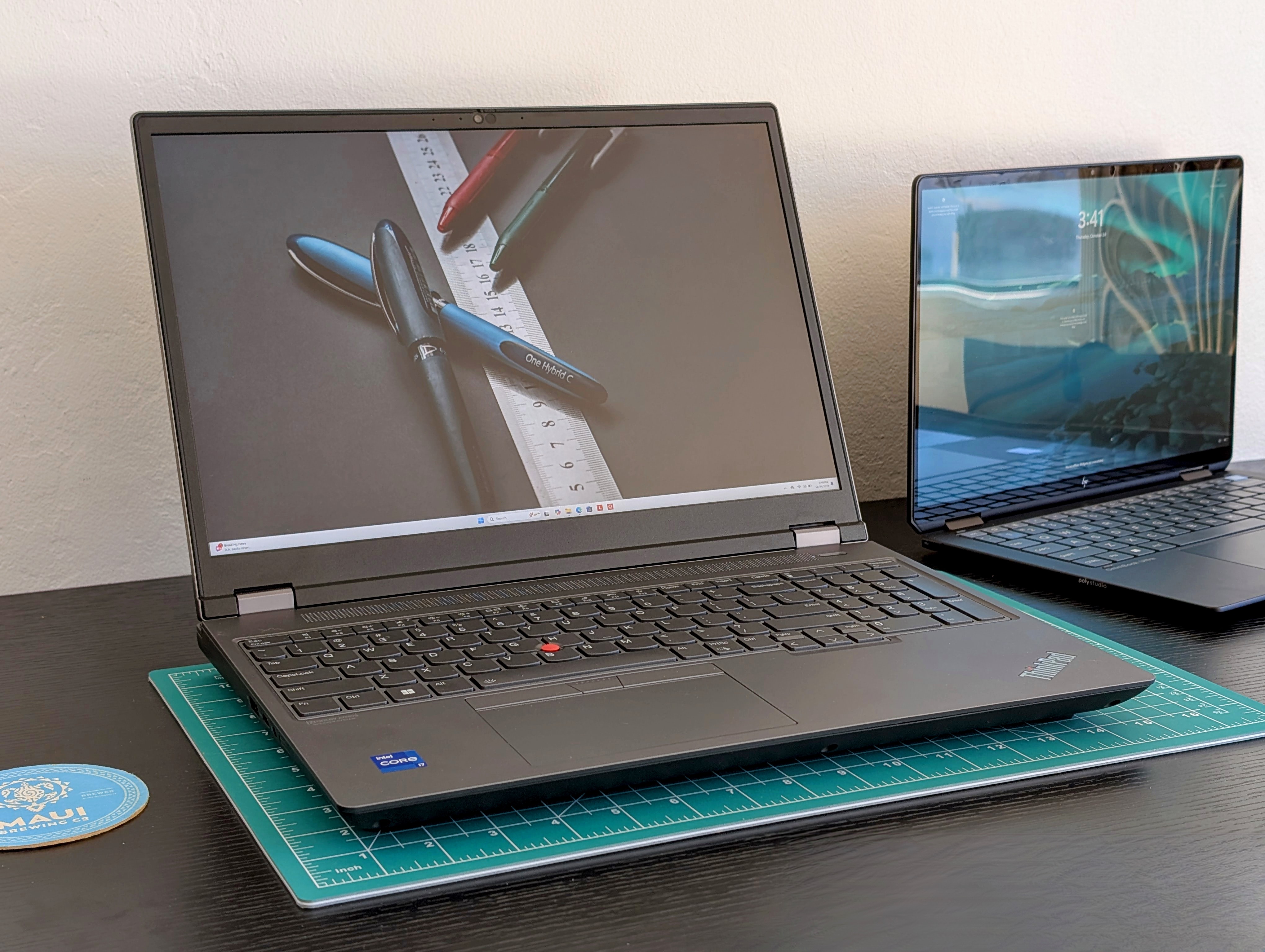
- Details
Lenovo ThinkPad P16 Gen 2 workstation review: Heavy with supercharged graphics

- Details
Lenovo Yoga Slim 7i Aura Edition review: The display, not Smart Modes, steals the show
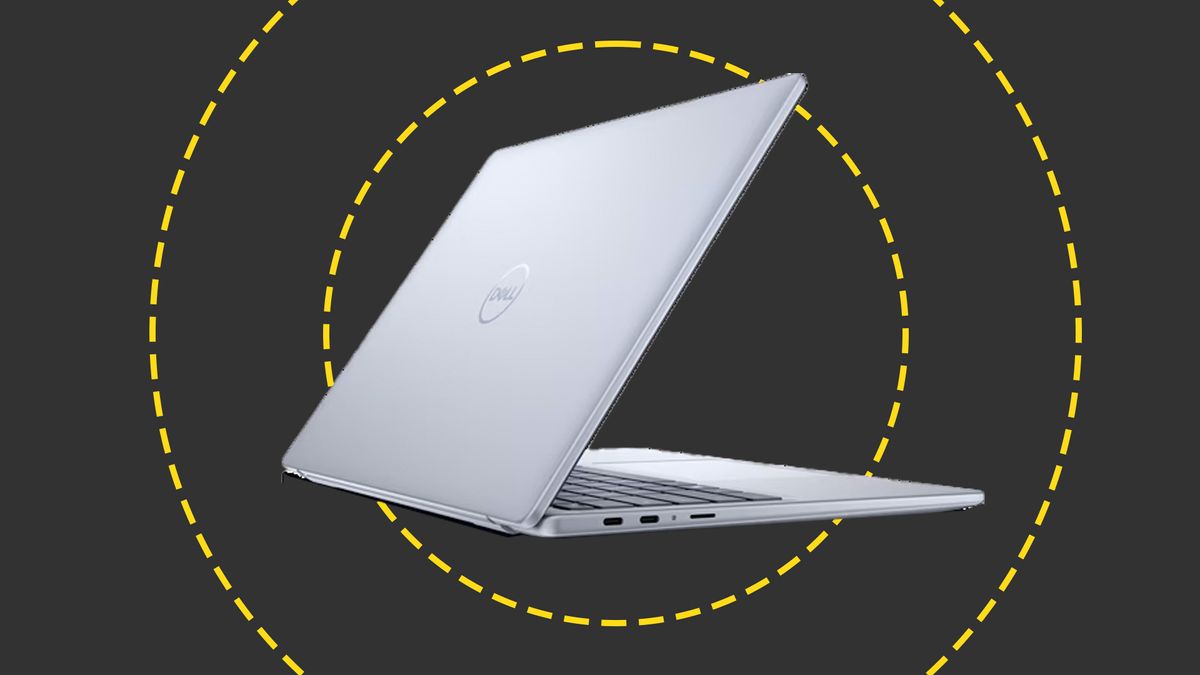
- Details
Dell Inspiron 14 Plus (7441) review: The cheapest Snapdragon laptop yet
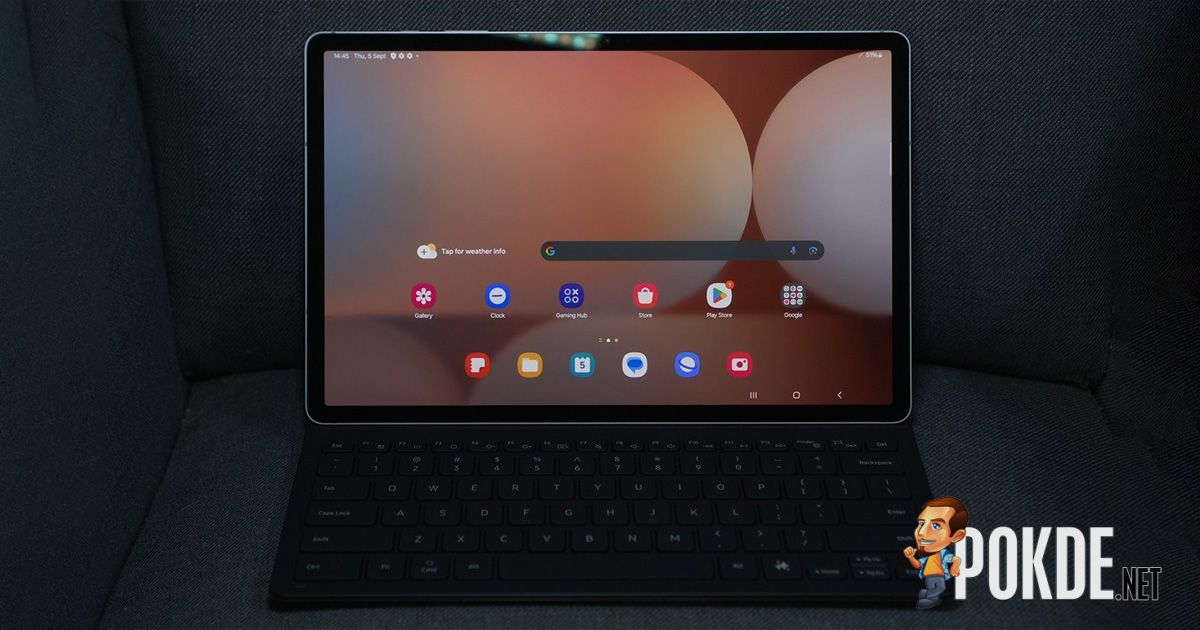
- Details
Samsung Galaxy Tab S10 Plus Review - Worthy Laptop Replacement Unless You Really Need Windows OS
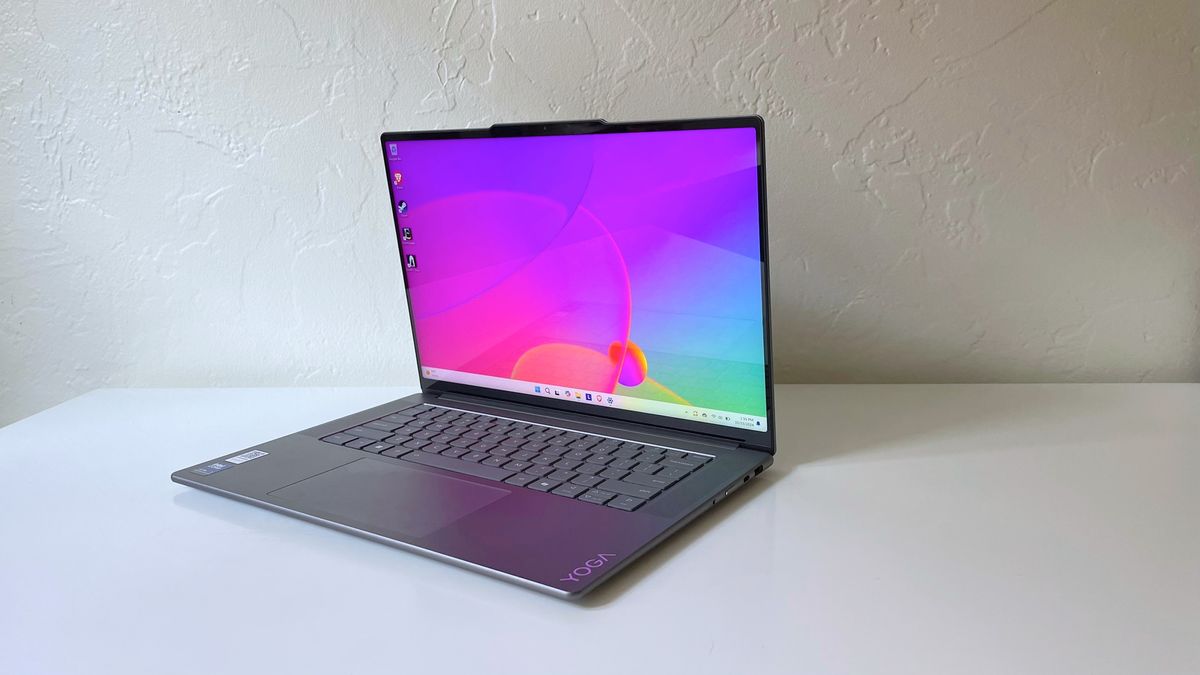
- Details
Lenovo Yoga Slim 7i Aura edition review: Can Lunar Lake top my favorite Lenovo laptop?
- Details
Lenovo Yoga Slim 6 14 laptop review: Premiere for the Radeon 740M
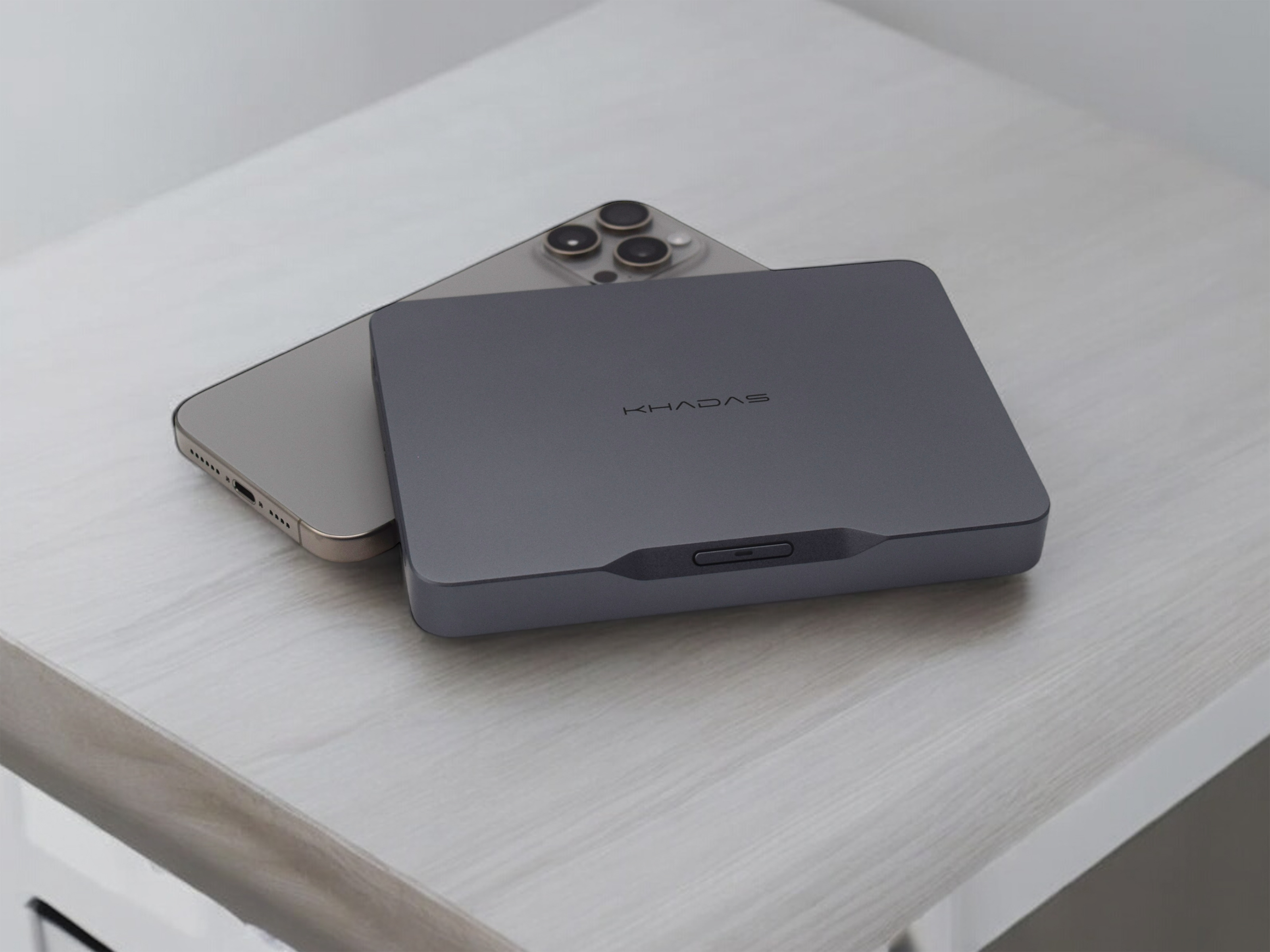
- Details
Khadas Mind 2 review: Portable mini PC now with Intel Core Ultra 7 155H, Thunderbolt 4 and USB4

- Details
Gigabyte G5 KF5 2024 laptop review: RTX 4060 gaming at a bargain price - is the deal worth it?
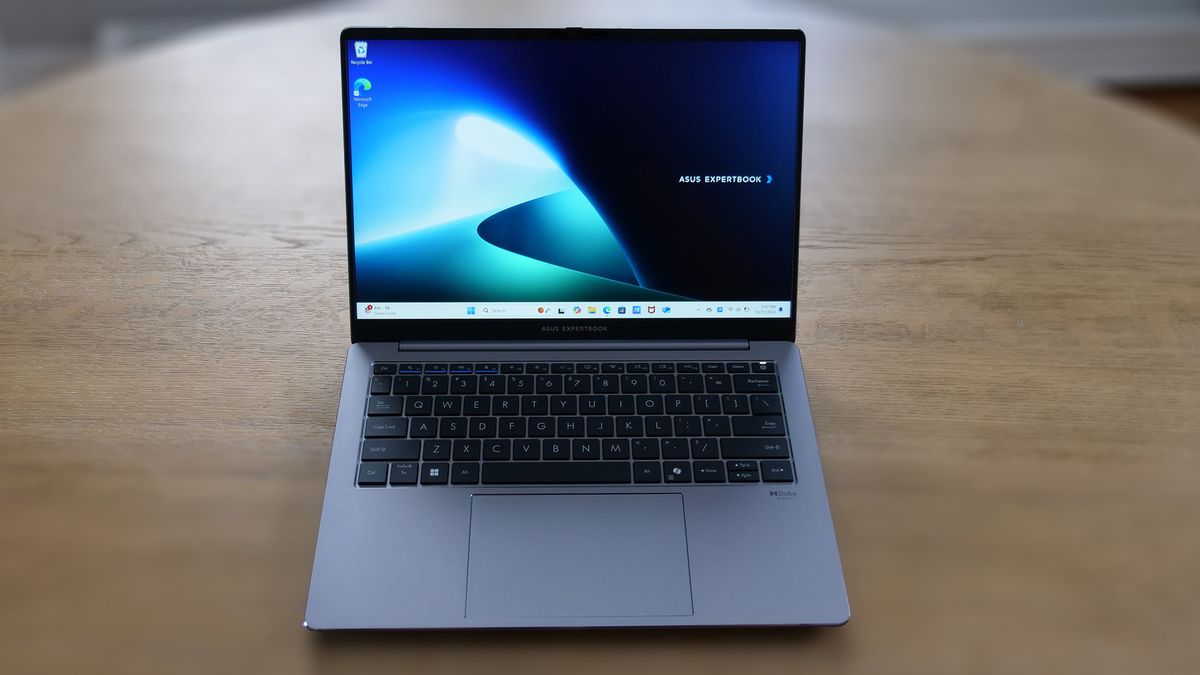
- Details
Asus ExpertBook P5 (P5405) review: The fastest laptop keyboard I've tested and over 14 hours of battery life
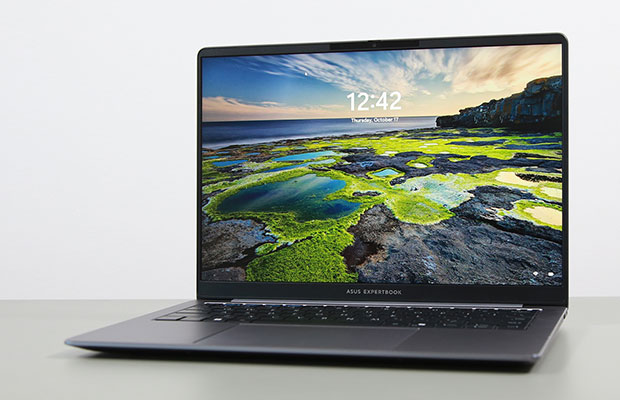
- Details
Asus ExpertBook P5 review (2024 P5405CSA series, Intel Lunar Lake)
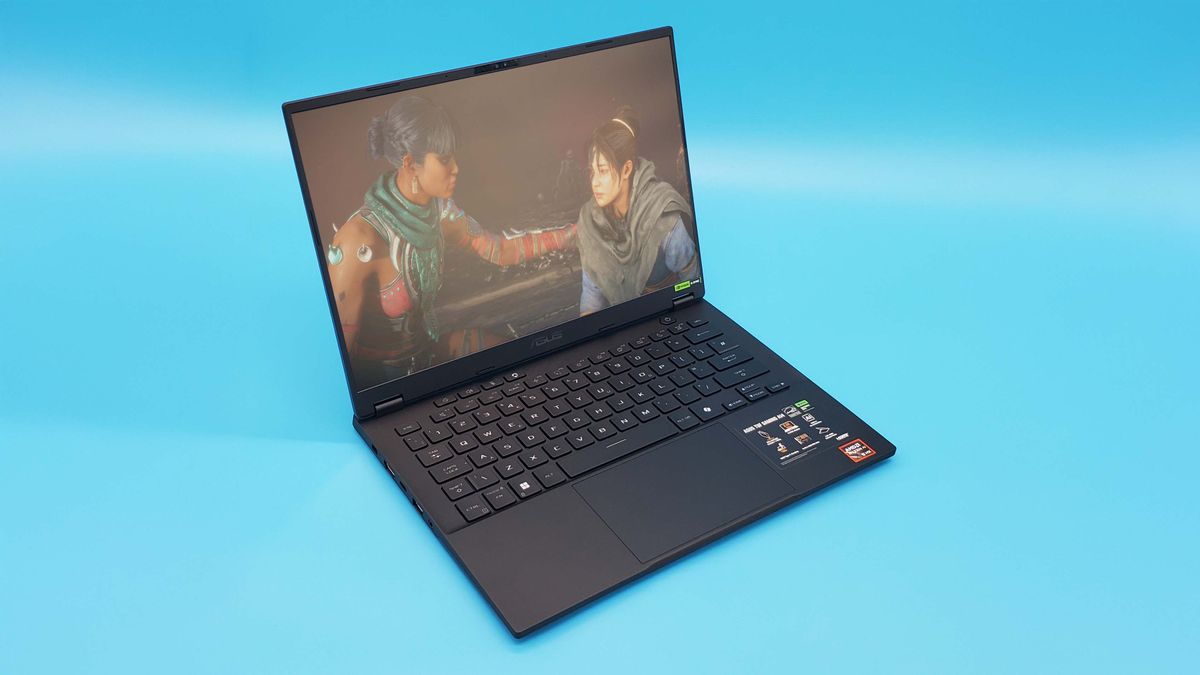
- Details
Asus TUF A14 review

- Details
Asus ZenBook S14 review: Stylish design, good performance
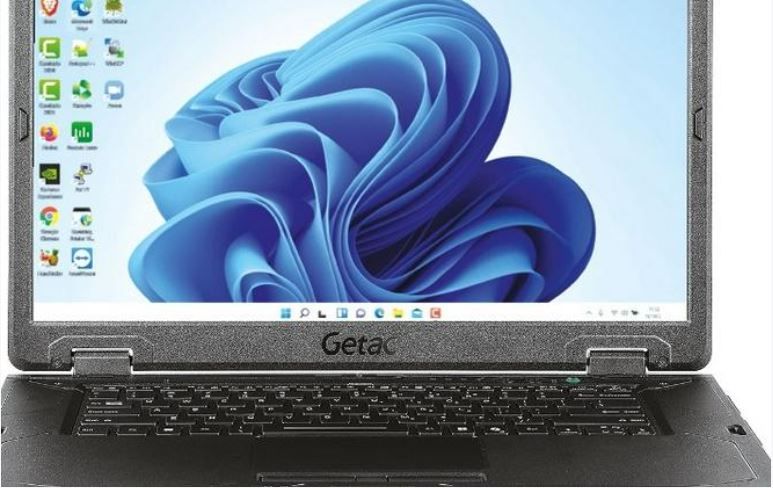
- Details
Hands on: Getac S510 review
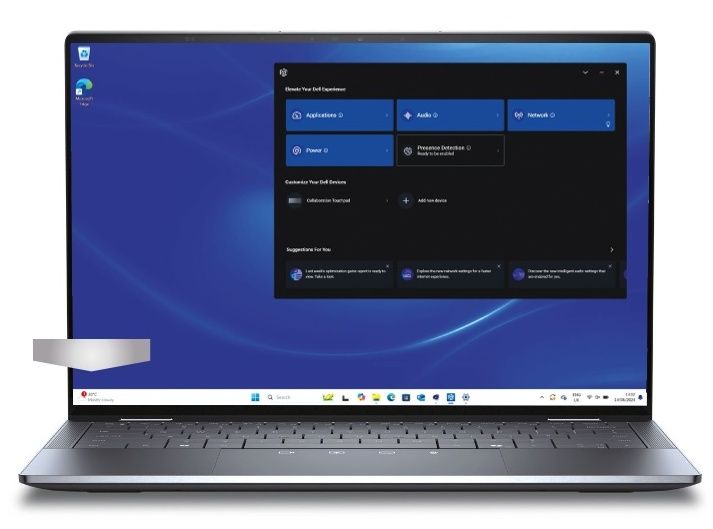
- Details
Hands on: Dell Latitude 9450 2-in-1 review
Budget Laptops
 10th July 2024
10th July 2024
Alienware m16 R2 review: Tons of power in compact and affordable machine
 31st May 2024
31st May 2024
Acer Swift Go 16 review: Power and endurance at an affordable price
 11th May 2024
11th May 2024
Acer Swift X 14 (2024) review: huge performance for cheap
Ultrabooks
 24th August 2022
24th August 2022
Asus Zenbook S 13 OLED review - a sleek all-purpose ultrabook at a premium
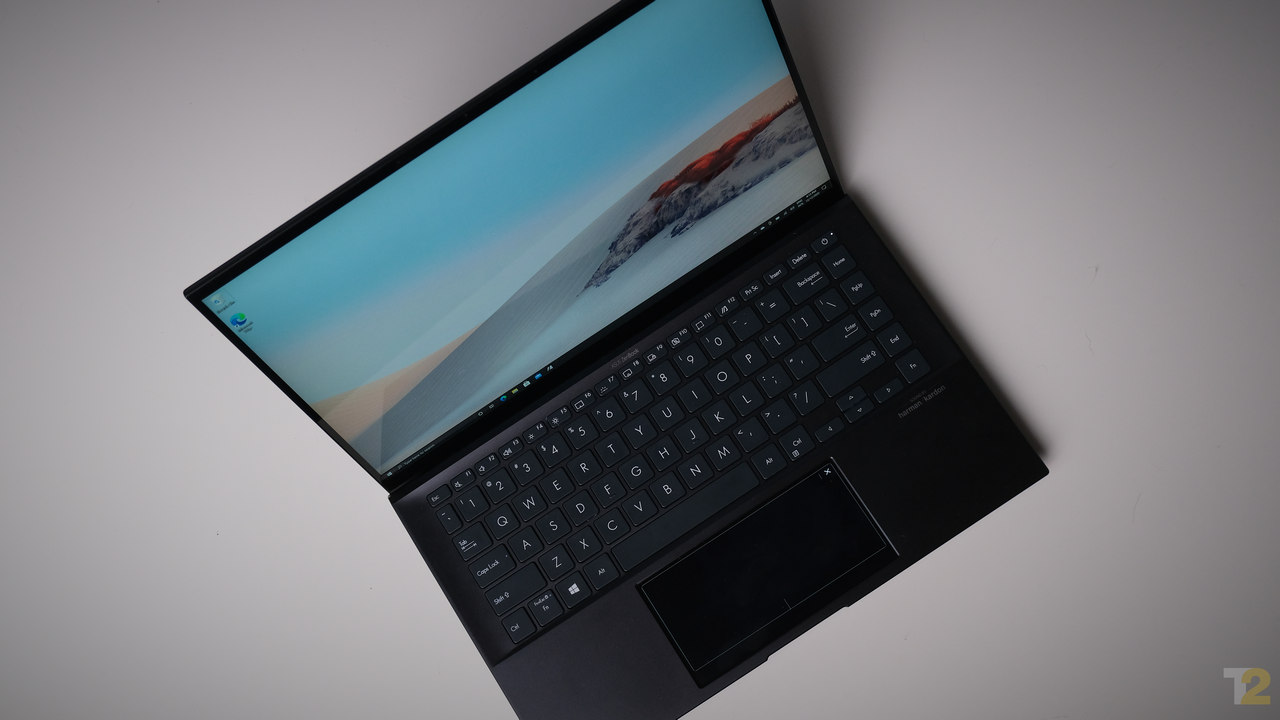 21st December 2020
21st December 2020
ASUS ZenBook UX435 laptop review: A decent Ultrabook if you ignore the gimmicks
2-in-1 Laptops
 13th November 2024
13th November 2024
Dell Latitude 7450 2-in-1 Laptop Review: Versatile business convertible that delivers on most fronts
Calculated business moves. | The Dell Latitude 7450 2-in-1 delivers good performance with its Intel Core Ultra 7 165U vPro processor while offering a solid set of features tailored for business professionals on the go. Dell even includes a robust array of tools to keep IT admins happy. However, improvements over its predecessor are incremental and its competitors, particularly the new Lenovo ThinkPad lineup, present equally compelling options.
 11th November 2024
11th November 2024
Lenovo Yoga 9i 2-in-1 Gen 9 review
14in OLED panel. While it peaked at a modest 402cd/m2 in our SDR tests, its VESA TrueBlack 500 certification shows in punchy colors when watching films or playing games. It covers 119% of the DCI-P3 gamut and you can trust its colors, too, with an average Delta E of 0.45. The native color temperature is a fraction warm, so whites aren’t as blazing as I like when typing in Word, but a density of 242ppi thanks to its 2,880 x 1,800 resolution makes the edges of text look razor sharp.Lenovo includes its Slim Pen stylus, which magnetically attaches to the top of the lid. I love the firmness of the connection, but it doesn’t charge at the same time; there’s a USB-C slot at the top of the pen. As ever when using a plastic tip on a glass surface you can’t expect a paper-like experience, but digital artists will appreciate the minimal 18ms lag, and the Smart Notes app is great for scribbles and sketches. At 1.3kg this isn’t an iPad rival, but I was happy holding it in the crook of my arm while...
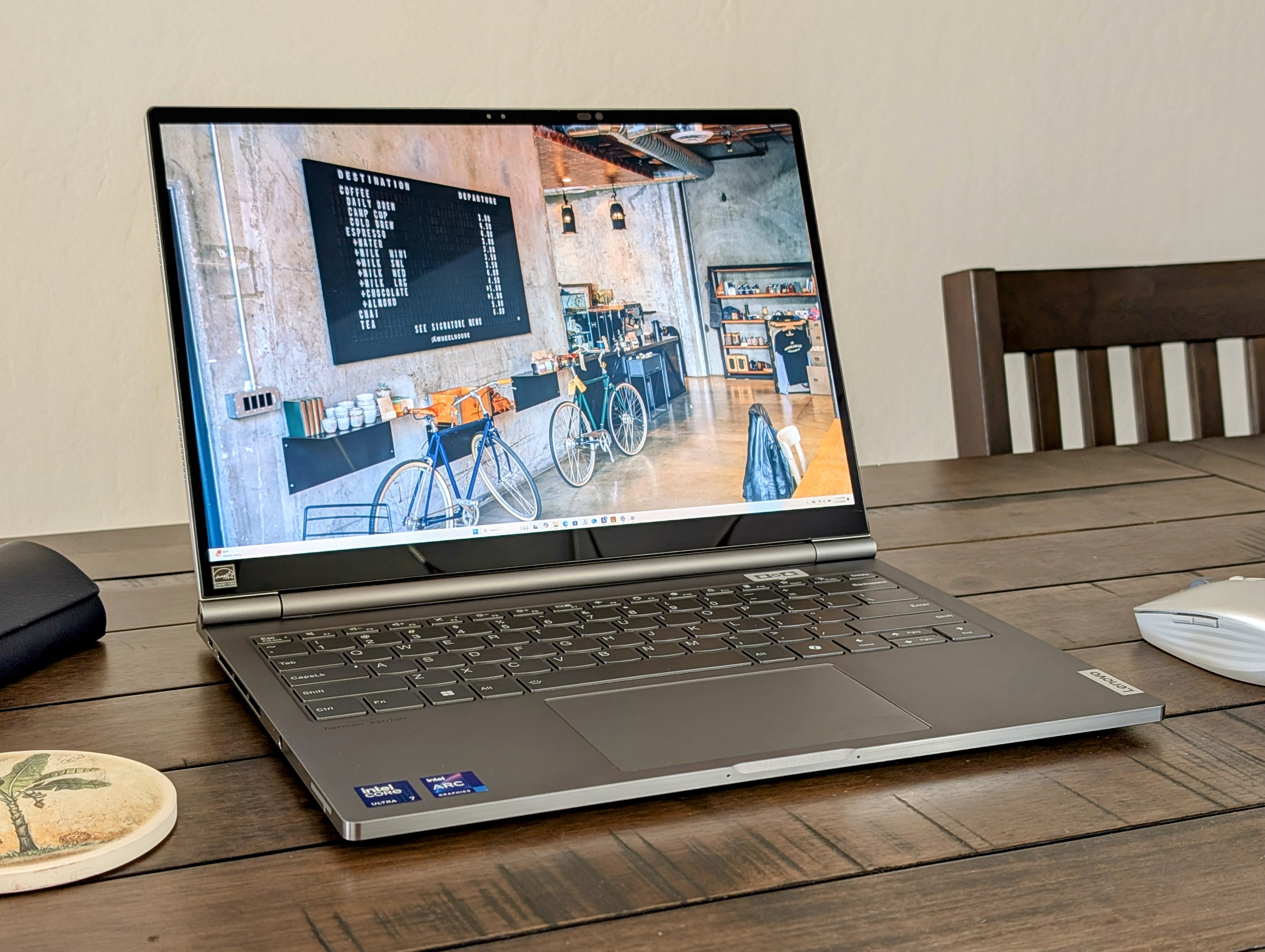 8th November 2024
8th November 2024
Lenovo ThinkBook Plus Gen 5 Hybrid 2-in-1 review: Dual-boot Windows 11 and Android 13
Gaming Laptops
AYANEO Pocket DMG Review: Retro Design Meets Modern Gaming

The AYANEO Pocket DMG is a remarkable blend of nostalgic design and modern gaming technology. This pocket handheld device captures the essence of classic gaming while offering a fresh, contemporary experience. Its vertical layout is a clear homage to iconic handhelds, instantly resonating with retro gaming fans. For those who remember the golden days of […]
The post AYANEO Pocket DMG Review: Retro Design Meets Modern Gaming appeared first on Geeky Gadgets.
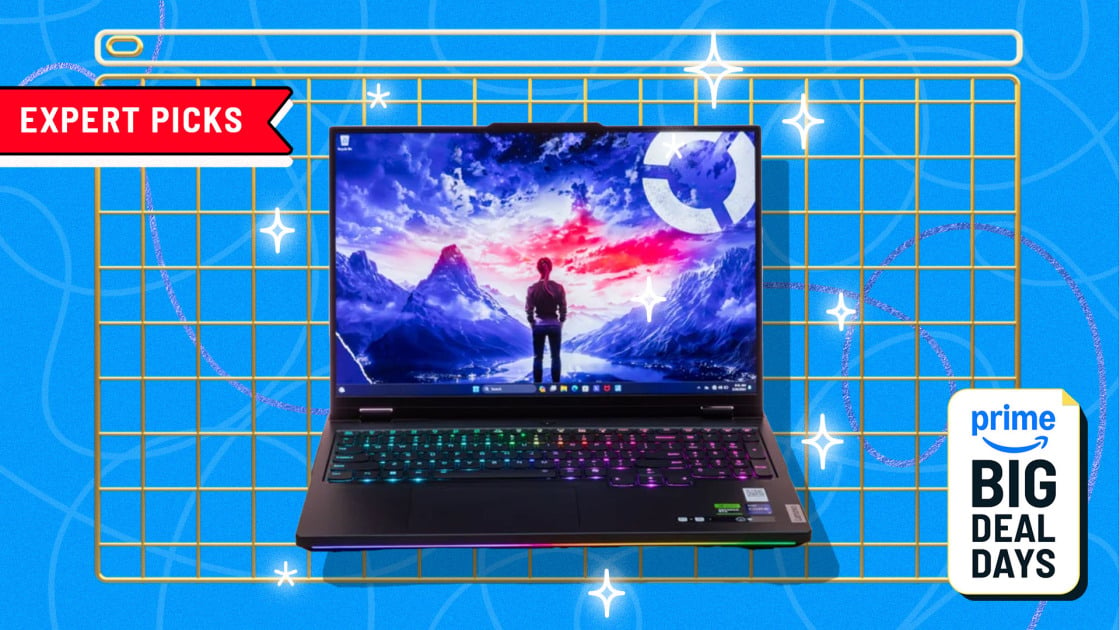 8th October 2024
8th October 2024
I Review Gaming PCs for a Living: These Are the Best Prime Day Deals I've Found
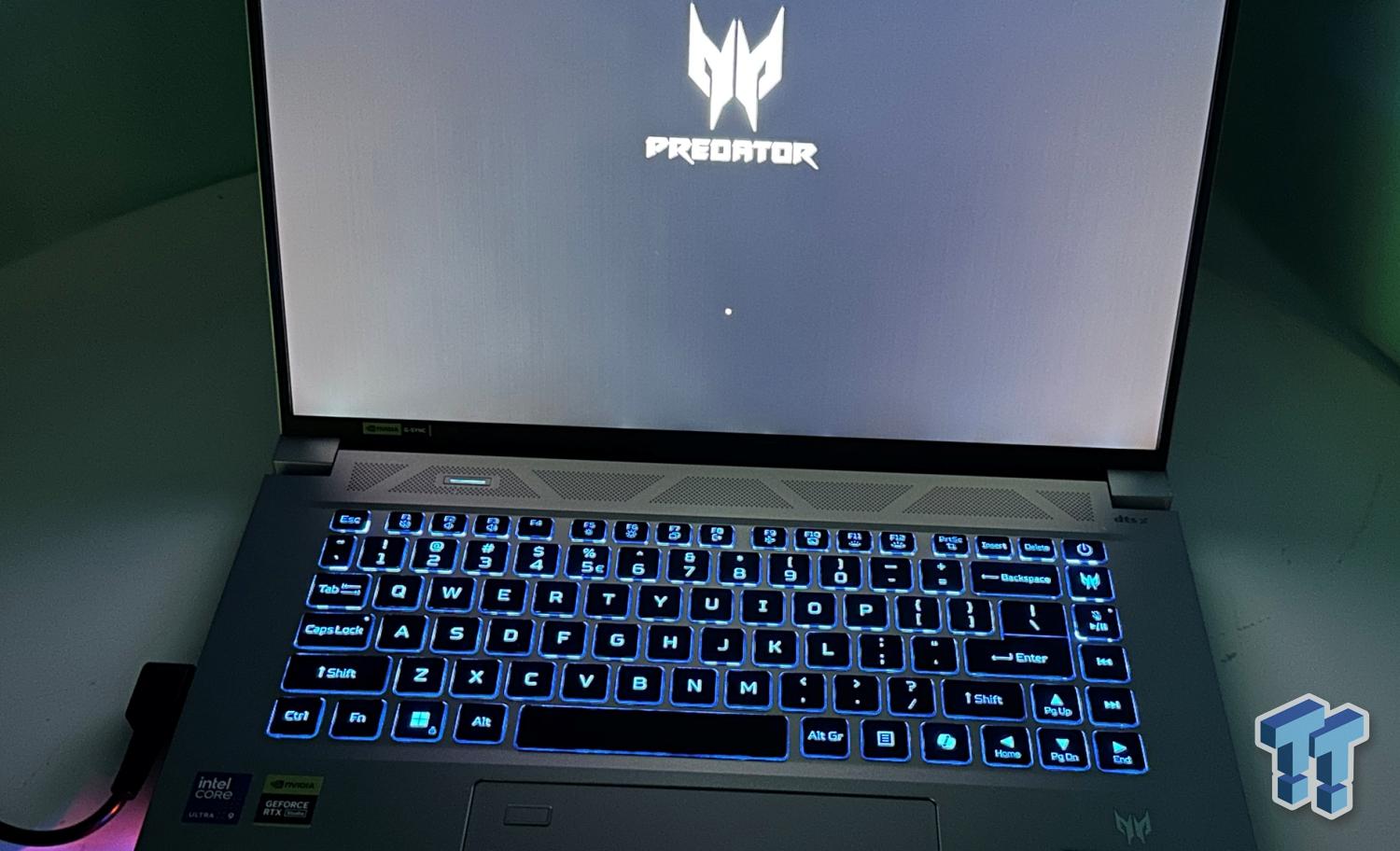 7th October 2024
7th October 2024
Acer Predator Triton Neo 16 Gaming Laptop Review
Business Laptops
 19th November 2024
19th November 2024
Review: Oman Air 787 Business Studio business class
 13th November 2024
13th November 2024
Dell Latitude 7450 2-in-1 Laptop Review: Versatile business convertible that delivers on most fronts
Calculated business moves. | The Dell Latitude 7450 2-in-1 delivers good performance with its Intel Core Ultra 7 165U vPro processor while offering a solid set of features tailored for business professionals on the go. Dell even includes a robust array of tools to keep IT admins happy. However, improvements over its predecessor are incremental and its competitors, particularly the new Lenovo ThinkPad lineup, present equally compelling options.
 14th September 2024
14th September 2024
